From Wikipedia, the free encyclopedia
Blog Ref Link http://www.p2pfoundation.net/Transfinacial_Economics
For historical changes in economies, see Economic history. For different groupings of economists, see Schools of economic thought. For famous economists, see List of economists.
| Economics |
|---|
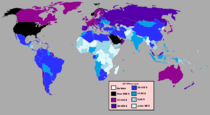 |
|
|
|
| By application |
|
| Lists |
Since medieval times, economics was developed almost exclusively in the West until the 20th century.
Scottish philosopher Adam Smith is often cited as "the Father of Modern Economics" for his treatise The Wealth of Nations (1776).[1][2] His ideas built upon a considerable body of work from predecessors in the eighteenth century, particularly the Physiocrats. His book appeared on the eve of the Industrial Revolution, with associated major changes in the economy.[3]
Smith's successors included such classical economists as Thomas Malthus, Jean-Baptiste Say, David Ricardo, and John Stuart Mill. They examined ways the landed, capitalist, and laboring classes produced and distributed national output and modeled the effects of population and international trade. In London, Karl Marx castigated the capitalist system, which he described as exploitative and alienating. From about 1870, neoclassical economics attempted to erect a positive, mathematical, and scientifically grounded field above normative politics.
After the two world wars of the early twentieth century, John Maynard Keynes led a reaction against governmental abstention from economic affairs, advocating interventionist fiscal policy to stimulate economic demand and growth. With a world divided between the capitalist first world, the communist second world, and the poor of the Third World, the post-war consensus broke down. Others like Milton Friedman and Friedrich Hayek warned of The Road to Serfdom and the unworkability of socialism, focusing their theories on what could be achieved through better monetary policy and deregulation.
As Keynesian policies seemed to falter in the 1970s, there emerged New Classical Macroeconomics, developed by prominent theorists including Robert Lucas, and Edward C. Prescott, who tried to provide neoclassical microeconomic mechanisms to help analyze macroeconomic issues. New Keynesian economists including Paul Krugman, Edmund Phelps, John B. Taylor and Huw Dixon responded to their critiques, eventually leading to the New Neoclassical Synthesis in macroeconomics. Meanwhile development economists like Amartya Sen, and information economists like Joseph Stiglitz introduced new ideas to economic thought.
Contents
[hide]- 1 Ancient economic thought
- 2 Economic thought in the Middle Ages
- 3 Mercantilism, nationalism, and international trade
- 3.1 School of Salamanca
- 3.2 Sir Thomas More
- 3.3 Nicolaus Copernicus
- 3.4 Jean Bodin
- 3.5 Barthélemy de Laffemas
- 3.6 Leonardus Lessius
- 3.7 Edward Misselden and Gerard Malynes
- 3.8 Thomas Mun
- 3.9 Sir William Petty
- 3.10 Philipp von Hörnigk
- 3.11 Jean-Baptiste Colbert and Pierre Le Pesant, Sieur de Boisguilbert
- 3.12 Charles Davenant
- 3.13 Sir James Steuart
- 4 The British Enlightenment
- 5 The Physiocrats and the circular flow
- 6 Adam Smith and The Wealth of Nations
- 7 Classical political economy
- 7.1 Jeremy Bentham
- 7.2 Henry Thornton
- 7.3 Jean-Baptiste Say
- 7.4 Charles Hall
- 7.5 Thomas Malthus and William Godwin
- 7.6 Jean Charles Léonard de Sismondi
- 7.7 Robert Owen
- 7.8 David Ricardo
- 7.9 Alexander Hamilton, Henry Clay, and the American System
- 7.10 Johann Heinrich von Thünen
- 7.11 Friedrich List and the National System
- 7.12 Wilhelm Roscher, Charles Gide and the historical school of economics
- 7.13 Pierre-Joseph Proudhon
- 7.14 John Stuart Mill
- 7.15 Frederic Bastiat
- 8 Capitalism, Communism, and Karl Marx
- 9 Economic (business) cycle theory
- 10 Neoclassical economic thought: the marginalist school, the Cambridge school, and the Austrian school
- 10.1 Hermann Heinrich Gossen, Carl Menger, William Stanley Jevons, Leon Walras, John Bates Clark, and marginal utility
- 10.2 Antoine Augustin Cournot, Joseph Louis Francois Bertrand, Francis Edgeworth, Vilfredo Pareto, Alfred Marshall, Louis Bachelier, Harold Hotelling, Paul Lévy (mathematician) and mathematical economics
- 11 The Austrian school of economics
- 12 Maffeo Pantaleoni and public choice theory
- 13 The American Economic Association, Richard T. Ely and land Economics
- 14 Georg Friedrich Knapp and chartalism
- 15 The London School of Economics
- 16 Thorstein Veblen and the American Way
- 17 Evolutionary economics
- 18 Gabriel Tarde and economic psychology
- 19 Max Weber and The Protestant Ethic
- 20 Henry Charles Taylor and agricultural economics
- 21 Alfred Mitchell-Innes and the credit theory of money
- 22 World War I and the Great Depression: consequences to economic thought
- 23 Economic thought between the World Wars
- 24 John R. Commons and institutional economics
- 25 Arthur Cecil Pigou
- 26 John Maynard Keynes and Keynesianism
- 27 Fred M. Taylor, Oskar R. Lange, Abba Lerner and market socialism
- 28 The Stockholm school of economics
- 29 Econometrics
- 30 Adolf Berle, Gardiner C. Means and corporate governance
- 31 Edward Chamberlin and industrial organization economics
- 32 Benjamin Graham, David Dodd and value investing
- 33 Leonid Kantorovich and linear programming
- 34 John von Neumann, Oskar Morgenstern, John Forbes Nash and Game Theory
- 35 Post-World War II economic thought: the Globalization Era
- 36 John Kenneth Galbraith and The Affluent Society
- 37 Paul Samuelson
- 38 Kenneth Arrow
- 39 The Chicago school of economics
- 40 Eugene Fama and the efficient market hypothesis
- 41 James E. Meade and international economics
- 42 Sir Arthur Lewis, Simon Kuznets and development economics
- 43 Robert Solow, Trevor Swan and the Neoclassical Growth Model
- 44 New Economic History (Cliometrics)
- 45 John R. Meyer and transportation economics
- 46 Walt Whitman Rostow and the five stages of economic development
- 47 James M. Buchanan, Gordon Tullock, public choice theory, and constitutional economics
- 48 Marcus Fleming, Robert Mundell and the Impossible Trinity
- 49 The saltwater and freshwater schools of economics
- 50 George Akerlof, Joseph E. Stiglitz and information economics
- 51 Harold Demsetz, Armen Alchian and new institutional economics
- 52 Leonid Hurwicz, Eric Maskin, Roger Myerson and market design theory
- 53 Paul Krugman and new trade theory
- 54 Robert Lucas, Jr., Fynn Kydland, Edward C. Prescott, new classical macroeconomics, and the new neoclassical synthesis
- 55 New Keynesian macroeconomics
- 56 Sidney Weintraub, Paul Davidson and Post-Keynesian economics
- 57 Amartya Sen and Development economics
- 58 Muhammad Yunus and microcredit
- 59 The Feldstein–Horioka Puzzle
- 60 Robert E. Hall and the flat tax
- 61 The dot-com bubble
- 62 The 2008–2009 Keynesian Resurgence and the Great Recession
- 63 The 2010 Austerity Wave
- 64 Other contemporary economists
- 65 See also
- 66 Notes
- 67 References
- 68 Journals
- 69 Further reading
- 70 External links
Ancient economic thought[edit]
Main articles: Ancient economic thought, Chanakya, Xenophon, Oeconomicus, Fan Li, Qin Shihuang, Wang Anshi, Muqaddimah, Arthashastra, and Economics of Mahavira
The earliest discussions of economics date back to ancient times, e.g. Xenophon's Oeconomicus (written c. 360 BCE) and Chanakya's (born c. 350 BCE) Arthashastra. Until the 18th–19th century Industrial Revolution in the West, economics was not a separate discipline but part of philosophy.Plato and Aristotle[edit]
Main articles: Plato, Republic (dialogue), Credit theory of money, Aristotle, Politics (Aristotle), Nicomachean Ethics, and Metallism
[4] Plato's dialogue The Republic (ca. 380–360 BCE) described the ideal city-state, run by philosopher-kings, and contained references to specialization of labor and production. Plato was the first to advocate the Credit Theory of Money, that money originated as a unit of account for debt.
Plato's student Aristotle's Politics (ca. 350 BCE) was mainly concerned to analyze different forms of a state (monarchy, aristocracy, constitutional government, tyranny, oligarchy, democracy) as a critique of Plato's advocacy of a ruling class of philosopher-kings. In particular for economists, Plato had drawn a blueprint of society on the basis of common ownership of resources. Aristotle viewed this model as an oligarchical anathema. In Politics, Book II, Part V, he argued that:
"Property should be in a certain sense common, but, as a general rule, private; for, when everyone has a distinct interest, men will not complain of one another, and they will make more progress, because every one will be attending to his own business... And further, there is the greatest pleasure in doing a kindness or service to friends or guests or companions, which can only be rendered when a man has private property. These advantages are lost by excessive unification of the state."[5]Though Aristotle certainly advocated there be many things held in common, he argued that not everything could be, simply because of the "wickedness of human nature".[5] "It is clearly better that property should be private", wrote Aristotle, "but the use of it common; and the special business of the legislator is to create in men this benevolent disposition." In Politics Book I, Aristotle discusses the general nature of households and market exchanges. For him there is a certain "art of acquisition" or "wealth-getting", but because it is the same many people are obsessed with its accumulation, and "wealth-getting" for one's household is "necessary and honorable", while exchange on the retail trade for simple accumulation is "justly censured, for it is dishonorable".[6] Of the people he stated they as a whole thought acquisition of wealth (chrematistike) as being either the same as, or a principle of oikonomia (household management – oikonomos),[7][8] with oikos as house and nomos in fact translated as custom or law.[8] Aristotle himself was highly disapproving of usury and cast scorn on making money through means of a monopoly.[9]
Aristotle discarded Plato's credit theory of money for Metallism, the theory that money derives its value from the purchasing power of the commodity upon which it is based, and is only an "instrument", its sole purpose being a medium of exchange, which means on its own "it is worthless... not useful as a means to any of the necessities of life".[10]
Economic thought in the Middle Ages[edit]
Main articles: Thomas Aquinas, Scholasticism, Duns Scotus, Ibn Khaldun, and Islamic economic jurisprudence
Thomas Aquinas[edit]
Aquinas discusses a number of topics in the format of questions and replies, substantial tracts dealing with Aristotle's theory. Questions 77 and 78 concern economic issues, mainly relate to what a just price is, and to the fairness of a seller dispensing faulty goods. Aquinas argued against any form of cheating and recommended compensation always be paid in lieu of good service. Whilst human laws might not impose sanctions for unfair dealing, divine law did, in his opinion.
Duns Scotus[edit]
One of Aquinas' main critics[11] was Duns Scotus (1265–1308), originally from Duns Scotland, who taught in Oxford, Cologne, and Paris. In his work Sententiae (1295), he thought it possible to be more precise than Aquinas in calculating a just price, emphasizing the costs of labor and expenses, although he recognized that the latter might be inflated by exaggeration because buyer and seller usually have different ideas of what a just price comprises. If people did not benefit from a transaction, in Scotus' view, they would not trade. Scotus defended merchants as performing a necessary and useful social role, transporting goods and making them available to the public.[11]Ibn Khaldun[edit]
Until Joseph J. Spengler's 1964 work "Economic Thought of Islam: Ibn Khaldun", Adam Smith (1723–1790) was believed to be the "Father of Economics". Now there is a second candidate, Arab Muslim scholar Ibn Khaldun (1332–1406) of Tunisia, although how the Muslim world fell behind the West, or what influence Khaldun had in the West is unclear.| Businesses owned by responsible and organized merchants shall eventually surpass those owned by wealthy rulers.[12] |
| Ibn Khaldun on economic growth and the ideals of Platonism |
Nicole Oresme[edit]
French philosopher Nicole Oresme (1320–1382) wrote a work on the medieval conception of money.Mercantilism, nationalism, and international trade[edit]
Main articles: Mercantilism and International trade
See also: Victor de Riqueti, marquis de Mirabeau, Jean Bodin, Nicolaus Copernicus, Edward Misselden, Gerard Malynes, Thomas Mun, William Petty, Philipp von Hörnigk, Charles Davenant, and Josiah Child
See also: Jean-Baptiste Colbert, Pierre Le Pesant, sieur de Boisguilbert, Sir James Steuart, Barthélemy de Laffemas, Leonardus Lessius, and School of Salamanca
Mercantile theorists thought that international trade could not benefit all countries at the same time. Because money and precious metals were the only source of riches, there was a limited quantity of resources to be shared between countries, therefore, tariffs should be used to encourage exports (bringing more money into the country) and discourage imports (sending money abroad). In other words a positive balance of trade ought to be maintained via a surplus of exports, often backed by military might. Despite its prevalence, the term mercantilism was not coined until 1763 by Victor de Riqueti, marquis de Mirabeau (1715–1789), and popularized by Adam Smith in 1776, who vigorously opposed its ideas.
School of Salamanca[edit]
Main article: School of Salamanca
In the 16th century the Jesuit School of Salamanca in Spain developed economic theory to a high level, only to have their contributions forgotten until the 20th century.Sir Thomas More[edit]
Main article: Sir Thomas More
In 1516 English humanist Sir Thomas More (1478–1535) published Utopia, which describes an ideal society where land is owned in common and there is universal education and religious tolerance, inspiring the English Poor Laws (1587) and the communism-socialism movement.Nicolaus Copernicus[edit]
Main article: Nicolaus Copernicus, Quantity theory of money
In 1517 Polish astronomer Nicolaus Copernicus (1473–1543) published the first known argument for the Quantity Theory of Money. In 1519 he published the first known form of Gresham's Law: "Bad money drives out good".Jean Bodin[edit]
Main article: Jean Bodin
In 1568 Jean Bodin (1530–1596) of France published Reply to Malestroit, containing the first known analysis of economic inflation, which he claimed was being caused by the importation of gold and silver from South America, backing the Quantity Theory of Money.Barthélemy de Laffemas[edit]
Main article: Barthélemy de Laffemas
In 1598 French mercantilist economist Barthélemy de Laffemas (1545–1612) published Les Trésors et richesses pour mettre l'Estat en splendeur, which blasted those who frowned on French silks because the industry created employment for the poor, the first known mention of Underconsumption Theory, which is later refined by John Maynard Keynes.Leonardus Lessius[edit]
Main article: Leonardus Lessius
In 1605 Flemish Jesuit theologian Leonardus Lessius (1554–1623) published On Justice and Law, the deepest moral-theological study of economics since Aquinas, whose just price approach he claimed was no longer workable. After comparing money's growth via avarice to the propagation of hares, he made the first statement of the price of insurance as being based on risk.Edward Misselden and Gerard Malynes[edit]
Main articles: Edward Misselden and Gerard Malynes
In 1622 English merchants Edward Misselden and Gerard Malynes began a dispute over free trade and the desirability of government regulation of companies, with Malynes arguing against foreign exchange as under the control of bankers, and Misselden arguing that international money exchange and fluctuations in the exchange rate depend upon international trade and not bankers, and that the state should regulate trade to insure export surpluses.Thomas Mun[edit]
Main article: Thomas Mun
English economist Thomas Mun (1571–1641) describes early mercantilist policy in his book England's Treasure by Foreign Trade, which was not published until 1664, although it was widely circulated in manuscript form during his lifetime. Mun was a member of the East India Company, writing about his experiences in A Discourse of Trade from England unto the East Indies (1621).According to Mun, trade was the only way to increase England's treasure (national wealth), and in pursuit of this end he suggested several courses of action. Important were frugal consumption to increase the amount of goods available for export, increased utilization of land and other domestic natural resources to reduce import requirements, lowering of export duties on goods produced domestically from foreign materials, and the export of goods with inelastic demand because more money could be made from higher prices.
Sir William Petty[edit]
Main article: William Petty
In 1662 English economist Sir William Petty (1623–1687) began publishing short works applying the rational scientific tradition of Francis Bacon to economics, requiring that it only use measurable phenomena and seek quantitative precision, coining the term "political arithmetic", introducing statistical mathematics, and becoming the first scientific economist.Philipp von Hörnigk[edit]
Main article: Philipp von Hörnigk
"To inspect the country's soil with the greatest care, and not to leave the agricultural possibilities of a single corner or clod of earth unconsidered... All commodities found in a country, which cannot be used in their natural state, should be worked up within the country... Attention should be given to the population, that it may be as large as the country can support... gold and silver once in the country are under no circumstances to be taken out for any purpose... The inhabitants should make every effort to get along with their domestic products... [Foreign commodities] should be obtained not for gold or silver, but in exchange for other domestic wares... and should be imported in unfinished form, and worked up within the country... Opportunities should be sought night and day for selling the country's superfluous goods to these foreigners in manufactured form... No importation should be allowed under any circumstances of which there is a sufficient supply of suitable quality at home."Nationalism, self-sufficiency and national power were the basic policies proposed.[13]
Jean-Baptiste Colbert and Pierre Le Pesant, Sieur de Boisguilbert[edit]
Main articles: Jean-Baptiste Colbert and Pierre Le Pesant, sieur de Boisguilbert
In 1665–1683 Jean-Baptiste Colbert (1619–1683) was minister of finance under King Louis XIV of France, setting up national guilds to regulate major industries. Silk, linen, tapestry, furniture manufacture and wine were examples of the crafts in which France specialized, all of which came to require membership of a guild to operate in until the French Revolution. According to Colbert, "It is simply and solely the abundance of money within a state [which] makes the difference in its grandeur and power."[citation needed]In 1695 French economist Pierre Le Pesant, sieur de Boisguilbert (1646–1714) wrote a plea to Louis XIV to end Colbert's mercantilist program, containing the first notion of an economical market, becoming the first economist to question the economic policy of mercantilism and value the wealth of a country by its production and exchange of goods instead of the amount of money it has.
Charles Davenant[edit]
Main article: Charles Davenant
In 1696 British mercantilist Tory MP Charles Davenant (1656–1714) published Essay on the East India Trade, displaying the first understanding of consumer demand and perfect competition.Sir James Steuart[edit]
Main article: Sir James Steuart
In 1767 Scottish mercantilist economist Sir James Steuart (1713–1780) published An Inquiry into the Principles of Political Economy, the first book in English with the term "political economy" in the title, and the first complete economics treatise.The British Enlightenment[edit]
In the 17th century Britain went through some of its most troubling times, enduring not only the political and religious division of the English Civil War, King Charles I's execution, and the Cromwellian dictatorship, but also the Great Plague of London and Great Fire of London. The monarchy was restored under Charles II, who had Roman Catholic sympathies, leading to turmoil and strife, but his Catholic-leaning successor King James II was swiftly ousted. Invited in his place were Protestant William of Orange and Mary, who assented to the Bill of Rights 1689, ensuring that the Parliament was dominant in what became known as the Glorious Revolution.The upheaval was accompanied by a number of major scientific advances, including Robert Boyle's discovery of the gas pressure constant (1660) and Sir Isaac Newton's publication of Philosophiae Naturalis Principia Mathematica (1687), which described Newton's Laws of Motion and his Universal Law of Gravitation.
All these factors spurred the advancement of economic thought. For instance, Richard Cantillon (1680–1734) consciously imitated Newton's forces of inertia and gravity in the natural world with human reason and market competition in the economic world.[14] In his Essay on the Nature of Commerce in General, he argued rational self-interest in a system of freely-adjusting markets would lead to order and mutually-compatible prices. Unlike the mercantilist thinkers however, wealth was found not in trade but in human labor. The first person to tie these ideas into a political framework was John Locke.
John Locke[edit]
Main article: John Locke
"God hath given the world to men in common... Yet every man has a property in his own person. The labour of his body and the work of his hands we may say are properly his. Whatsoever, then, he removes out of the state that nature hath provided and left it in, he hath mixed his labour with, and joined to it something that is his own, and thereby makes it his property."[16]Locke was arguing that not only should the government cease interference with people's property (or their "lives, liberties and estates"), but also that it should positively work to ensure their protection. His views on price and money were laid out in a letter to a Member of Parliament in 1691 entitled Some Considerations on the Consequences of the Lowering of Interest and the Raising of the Value of Money (1691), arguing that the "price of any commodity rises or falls, by the proportion of the number of buyers and sellers", a rule which "holds universally in all things that are to be bought and sold."[17]
Dudley North[edit]
Main article: Dudley North (economist)
Dudley North (1641–1691) was a wealthy merchant and landowner. He worked as an official for the Treasury and was opposed to most mercantile policy. In his Discourses upon trade (1691), which he published anonymously, he argued that the assumption of the necessity of a favorable trade balance was wrong. Trade, he argued, benefits both sides, it promotes specialization, the division of labor and produces an increase in wealth for everyone. Regulation of trade interfered with these benefits by reducing the flow of wealth.David Hume[edit]
Main article: David Hume
David Hume (1711–1776) agreed with North's philosophy and denounced mercantilist assumptions. His contributions were set down in Political Discourses (1752), and later consolidated in his Essays, Moral, Political, Literary (1777). Adding to the fact that it was undesirable to strive for a favourable balance of trade, Hume argued that it is, in any case, impossible.Hume held that any surplus of exports that might be achieved would be paid for by imports of gold and silver. This would increase the money supply, causing prices to rise. That in turn would cause a decline in exports until the balance with imports is restored.
Francis Hutcheson[edit]
Main article: Francis Hutcheson (philosopher)
Francis Hutcheson (1694–1746), the teacher of Adam Smith in 1737–1740[18] is considered to be at the end of a long tradition of thought on economics as "household or family (οἶκος) management",[19][20][21] stemming from Xenophon's work Oeconomicus.[22][23]The Physiocrats and the circular flow[edit]
Main article: Physiocracy
See also: Bernard Mandeville, John Law (economist), Pierre le Pesant de Boisguilbert, and Victor de Riqueti
Similarly disenchanted with regulation on trademarks inspired by mercantilism, a Frenchman named Vincent de Gournay (1712–1759) is reputed to have asked why it was so hard to laissez faire ("let it be"), laissez passer ("let it pass"), advocating free enterprise and free trade. He was one of the early Physiocrats, a Greek word meaning "Government of nature", who held that agriculture was the source of wealth. As historian David B. Danbom wrote, the Physiocrats "damned cities for their artificiality and praised more natural styles of living. They celebrated farmers."[24] Over the end of the seventeenth and beginning of the eighteenth century big advances in natural science and anatomy were being made, including the discovery of blood circulation through the human body. This concept was mirrored in the physiocrats' economic theory, with the notion of a circular flow of income throughout the economy.
Pierre Samuel du Pont de Nemours, a prominent Physiocrat, emigrated to the U.S., and his son founded DuPont, the world's second biggest chemicals company.
In 1761 English Presbyterian minister Thomas Bayes (1701–1761) died, leaving an article describing Bayes' Theorem of conditional probabilities, which was generalized by statisticians and widely adopted by economists.
Jacques Turgot (1727–1781) was born in Paris and from an old Norman family. His best known work, Réflexions sur la formation et la distribution des richesses (Reflections on the Formation and Distribution of Wealth) (1766) developed Quesnay's theory that land is the only source of wealth. Turgot viewed society in terms of three classes: the productive agricultural class, the salaried artisan class (classe stipendice) and the landowning class (classe disponible). He argued that only the net product of land should be taxed and advocated the complete freedom of commerce and industry.
In August 1774 Turgot was appointed to be minister of finance, and in the space of two years he introduced many anti-mercantile and anti-feudal measures supported by the king. A statement of his guiding principles, given to the king were "no bankruptcy, no tax increases, no borrowing." Turgot's ultimate wish was to have a single tax on land and abolish all other indirect taxes, but measures he introduced before that were met with overwhelming opposition from landed interests. Two edicts in particular, one suppressing corvées (charges from farmers to aristocrats) and another renouncing privileges given to guilds inflamed influential opinion. He was forced from office in 1776.
Adam Smith and The Wealth of Nations[edit]
See also: Anders Chydenius
Smith was a Scottish moral philosopher, whose first book was The Theory of Moral Sentiments (1759). He argued in it that people's ethical systems develop through personal relations with other individuals, that right and wrong are sensed through others' reactions to one's behaviour. This gained Smith more popularity than his next work, The Wealth of Nations, which the general public initially ignored.[25] Yet Smith's political economic magnum opus was successful in circles that mattered.
Adam Smith's Invisible Hand[edit]
| "It is not from the benevolence of the butcher, the brewer or the baker, that we expect our dinner, but from their regard to their own self-interest. We address ourselves, not to their humanity but to their self-love, and never talk to them of our own necessities but of their advantages."[26] |
| Adam Smith's famous statement on self-interest |
Every man is rich or poor according to the degree in which he can afford to enjoy the necessaries, conveniencies, and amusements of human life. But after the division of labour has once thoroughly taken place, it is but a very small part of these with which a man's own labour can supply him. The far greater part of them he must derive from the labour of other people, and he must be rich or poor according to the quantity of that labour which he can command, or which he can afford to purchase. The value of any commodity, therefore, to the person who possesses it, and who means not to use or consume it himself, but to exchange it for other commodities, is equal to the quantity of labour which it enables him to purchase or command. Labour, therefore, is the real measure of the exchangeable value of all commodities. The real price of every thing, what every thing really costs to the man who wants to acquire it, is the toil and trouble of acquiring it.[28]When the butchers, the brewers and the bakers acted under the restraint of an open market economy, their pursuit of self-interest, thought Smith, paradoxically drives the process to correct real life prices to their just values. His classic statement on competition goes as follows.
When the quantity of any commodity which is brought to market falls short of the effectual demand, all those who are willing to pay... cannot be supplied with the quantity which they want... Some of them will be willing to give more. A competition will begin among them, and the market price will rise... When the quantity brought to market exceeds the effectual demand, it cannot be all sold to those who are willing to pay the whole value of the rent, wages and profit, which must be paid to bring it thither... The market price will sink...[29]Smith believed that a market produced what he dubbed the "progress of opulence". This involved a chain of concepts, that the division of labour is the driver of economic efficiency, yet it is limited to the widening process of markets. Both labour division and market widening requires more intensive accumulation of capital by the entrepreneurs and leaders of business and industry. The whole system is underpinned by maintaining the security of property rights.
Limitations[edit]
...erecting and maintaining certain public works and certain public institutions, which it can never be for the interest of any individual or small number of individuals, to erect and maintain... Every system which endeavours... to draw towards a particular species of industry a greater share of the capital of the society than what would naturally go to it... retards, instead of accelerating, the progress of the society toward real wealth and greatness.In addition to the necessity of public leadership in certain sectors Smith argued, secondly, that cartels were undesirable because of their potential to limit production and quality of goods and services.[30] Thirdly, Smith criticised government support of any kind of monopoly which always charges the highest price "which can be squeezed out of the buyers".[31] The existence of monopoly and the potential for cartels, which would later form the core of competition law policy, could distort the benefits of free markets to the advantage of businesses at the expense of consumer sovereignty.
William Pitt the Younger[edit]
William Pitt the Younger (1759–1806), Tory Prime Minister in 1783–1801 based his tax proposals on Smith's ideas, and advocated free trade as a devout disciple of The Wealth of Nations.[32] Smith was appointed a commissioner of customs and within twenty years Smith had a following of new generation writers who were intent on building the science of political economy.[25]Edmund Burke[edit]
Adam Smith expressed an affinity to the opinions of Irish MP Edmund Burke (1729–1797), known widely as a political philosopher:"Burke is the only man I ever knew who thinks on economic subjects exactly as I do without any previous communication having passed between us.[33]Burke was an established political economist himself, known for his book Thoughts and Details on Scarcity. He was widely critical of liberal politics, and condemned the French Revolution which began in 1789. In Reflections on the Revolution in France (1790) he wrote that the "age of chivalry is dead, that of sophisters, economists and calculators has succeeded, and the glory of Europe is extinguished forever." Smith's contemporary influences included François Quesnay and Jacques Turgot whom he met on a visit to Paris, and David Hume, his Scottish compatriot. The times produced a common need among thinkers to explain social upheavals of the Industrial revolution taking place, and in the seeming chaos without the feudal and monarchical structures of Europe, show there was order still.
Classical political economy[edit]
Main article: Classical economics
The classical economists were referred to as a group for the first time by Karl Marx.[34] One unifying part of their theories was the labour theory of value, contrasting to value deriving from a general equilibrium of supply and demand. These economists had seen the first economic and social transformation brought by the Industrial Revolution: rural depopulation, precariousness, poverty, apparition of a working class.They wondered about the population growth, because the demographic transition had begun in Great Britain at that time. They also asked many fundamental questions, about the source of value, the causes of economic growth and the role of money in the economy. They supported a free-market economy, arguing it was a natural system based upon freedom and property. However, these economists were divided and did not make up a unified current of thought.
A notable current within classical economics was underconsumption theory, as advanced by the Birmingham School and Malthus in the early 19th century. These argued for government action to mitigate unemployment and economic downturns, and was an intellectual predecessor of what later became Keynesian economics in the 1930s. Another notable school was Manchester capitalism, which advocated free trade, against the previous policy of mercantilism.
Jeremy Bentham[edit]
Main article: Jeremy Bentham
Jeremy Bentham (1748–1832) was perhaps the most radical thinker of his time, and developed the concept of utilitarianism. Bentham was an atheist, a prison reformer, animal rights activist, believer in universal suffrage, free speech, free trade and health insurance at a time when few dared to argue for any. He was schooled rigorously from an early age, finishing university and being called to the bar at 18. His first book, A Fragment on Government (1776) published anonymously was a trenchant critique of William Blackstone's Commentaries of the laws of England. This gained wide success until it was found that the young Bentham, and not a revered Professor had penned it. In An Introduction to the Principles of Morals and Legislation (1789) Bentham set out his theory of utility.[35]The aim of legal policy must be to decrease misery and suffering so far as possible while producing the greatest happiness for the greatest number.[36] Bentham even designed a comprehensive methodology for the calculation of aggregate happiness in society that a particular law produced, a felicific calculus.[37] Society, argued Bentham, is nothing more than the total of individuals,[38] so that if one aims to produce net social good then one need only to ensure that more pleasure is experienced across the board than pain, regardless of numbers.
For example, a law is proposed to make every bus in the city wheel chair accessible, but slower moving as a result than its predecessors because of the new design. Millions of bus users will therefore experience a small amount of displeasure (or "pain") in increased traffic and journey times, but a minority of people using wheel chairs will experience a huge amount of pleasure at being able to catch public transport, which outweighs the aggregate displeasure of other users.
Interpersonal comparisons of utility were allowed by Bentham, the idea that one person's vast pleasure can count more than many others' pain. Much criticism later showed how this could be twisted, for instance, would the felicific calculus allow a vastly happy dictator to outweigh the dredging misery of his exploited populus? Despite Bentham's methodology there were severe obstacles in measuring people's happiness.
Henry Thornton[edit]
Main article: Henry Thornton (reformer)
In 1802 English banker-economist ("Father of the Modern Central Bank") Henry Thornton (1760–1815) published An Enquiry into the Nature and Effects of the Paper Credit of Great Britain, which disputed that the 1797 British banking credit crisis was caused by an increase in paper credit, opposing the Real Bills Doctrine of John Law, Adam Smith et al. that claims that a bank should issue notes only in the discount of "good bills" at not more than 60-day due dates to prevent collapse; the doctrine is "thoroughly discredited" in 1945.Jean-Baptiste Say[edit]
Main article: Jean-Baptiste Say

Say's Law, by Jean-Baptiste Say (1767–1832), which states that supply always equals demand, was rarely challenged until the 20th century.
Say agreed that a part of the income is saved by the households, but in the long term, savings are invested. Investment and consumption are the two elements of demand, so that production is demand, so it is impossible for production to outrun demand, or for there to be a "general glut" of supply. Say also argued that money was neutral, because its sole role is to facilitate exchanges, therefore, people demand money only to buy commodities; "money is a veil".
To sum up these two ideas, Say said "products are exchanged for products". At most, there will be different economic sectors whose demands are not fulfilled. But over time supplies will shift, businesses will retool for different production and the market will correct itself. An example of a "general glut" could be unemployment, in other words, too great a supply of workers, and too few jobs. Say's Law advocates would suggest that this necessarily means there is an excess demand for other products that will correct itself. This remained a foundation of economic theory until the 1930s. Say's Law was first put forward by James Mill (1773–1836) in English, and was advocated by David Ricardo, Henry Thornton,[40] and James Mill's son John Stuart Mill. However two political economists, Thomas Malthus and Jean Charles Léonard de Sismondi, were unconvinced.
Charles Hall[edit]
Main article: Charles Hall
In 1805 English physician Charles Hall (1740-1825) published The Effects of Civilization on the People in European States, which blasted capitalism for being unable to provide for the poor during the famines of 1795-1801, calling for a progressive tax and luxury tax, later drawing praise from Karl Marx.Thomas Malthus and William Godwin[edit]
Main articles: Thomas Malthus and William Godwin
Thomas Malthus (1766–1834) was a Tory minister in the United Kingdom Parliament who, in contrast to Jeremy Bentham, believed in strict government abstention from social ills.[41] Malthus devoted the last chapter of his book Principles of Political Economy (1820) to rebutting Say's Law, arguing that the economy could stagnate with a lack of "effectual demand" caused by a "general glut" of goods.[42] In that case, wages that total less than the costs of production cannot purchase the total output of industry, causing deflation; price falls decrease incentives to invest, creating a downward spiral.Malthus is more notorious however for his 1798 work An Essay on the Principle of Population, a reply to the popular 1793 work An Enquiry Concerning Political Justice by William Godwin (1756–1836), which describes an ideal society based on the assumed perfectibility of the human race. Malthus argued that all government intervention would ultimately prove futile because of two factors, population growth and limited resources. "Food is necessary to the existence of man", wrote Malthus. "The passion between the sexes is necessary and will remain nearly in its present state", he added, meaning that the "power of the population is infinitely greater than the power in the Earth to produce subsistence for man."[43] Nevertheless growth in population is checked by "misery and vice". Any increase in wages for the masses would cause only a temporary growth in population, which given the constraints in the supply of the Earth's produce would lead to misery, vice and a corresponding readjustment to the original population.[44] However more labor could mean more economic growth, either one of which was able to be produced by an accumulation of capital.
Jean Charles Léonard de Sismondi[edit]
Main article: Jean Charles Léonard de Sismondi
In 1819 Swiss economist Jean Charles Léonard de Sismondi (1773–1842) published New Principles of Economic Philosophy, breaking ranks with Adam Smith by predicting that so-called general equilibrium would be marred by periodic economic crises, and calling for the state "to regulate the progress of wealth".Robert Owen[edit]
Main article: Robert Owen
Robert Owen (1771–1858) was British industrialist who worked to improve the conditions of his workers. He bought textile mills in New Lanark, Scotland where he forbade children under ten to work, limited the workday to 6 a.m. to 7 p.m., and provided evening schools for children when they finished. Such meager measures were still substantial improvements, and his business remained solvent through higher productivity, though his pay rates were lower than the national average.[45] In 1816 he published his vision in The New View of Society during the passage of the Factory Acts, but his attempts from 1824 to begin a new utopian community in New Harmony, Indiana ended in failure.David Ricardo[edit]
Main article: David Ricardo
If population grows, it becomes necessary to cultivate additional land, whose fertility is lower than that of already cultivated fields, because of the law of decreasing productivity. Therefore, the cost of the production of the wheat increases, as well as the price of the wheat: The rents increase also, the wages, indexed to inflation (because they must allow workers to survive) too. Profits decrease, until the capitalists can no longer invest. The economy, Ricardo concluded, is bound to tend towards a steady state.
To postpone the steady state, Ricardo advocates to promote international trade to import wheat at a low price to fight landowners. The Corn Laws of the UK had been passed in 1815, setting a fluctuating system of tariffs to stabilise the price of wheat in the domestic market. Ricardo argued that raising tariffs, despite being intended to benefit the incomes of farmers, would merely produce a rise in the prices of rents that went into the pockets of landowners.[48]
Furthermore, extra labour would be employed leading to an increase in the cost of wages across the board, and therefore reducing exports and profits coming from overseas business. Economics for Ricardo was all about the relationship between the three "factors of production": land, labour and capital. Ricardo demonstrated mathematically that the gains from trade could outweigh the perceived advantages of protectionist policy. The idea of comparative advantage suggests that even if one country is inferior at producing all of its goods than another, it may still benefit from opening its borders since the inflow of goods produced more cheaply than at home, produces a gain for domestic consumers.[49] According then to Ricardo, this concept would lead to a shift in prices, so that eventually England would be producing goods in which its comparative advantages were the highest.
Alexander Hamilton, Henry Clay, and the American System[edit]
Main articles: National System, Alexander Hamilton, Henry Clay, Mathew Carey, and Henry Charles Carey
Basing his approach on the protectionist philosophy of U.S. Treasury secretary Alexander Hamilton (1755–1804), U.S. Senator Henry Clay (1777–1852) promoted the American System of developmental capitalism utilizing protective tariffs and government intervention to insure national self-sufficiency. In 1822 Irish-born American economist Mathew Carey (1760–1839) published Essays on Political Economy; or, The Most Certain Means of Promoting the Wealth, Power, Resources, and Happiness of Nations, Applied Particularly to the United States,[50] one of the first treatises favoring Alexander Hamilton's protectionist economic policy. In 1837–1840 his son Henry Charles Carey (1793–1879) published Principles of Political Economy,[51] which soon became the standard representation of the American school of economic thought, dominating the U.S. economic system until after World War II. In 1851 Henry Charles Carey published The Harmony of Interests: Agricultural, Manufacturing, and Commercial (1851),[52] which rejects the "British System" of laissez faire free trade capitalism in favor of the American System.Johann Heinrich von Thünen[edit]
Main article: Johann Heinrich von Thünen
In 1826 German economist Johann Heinrich von Thünen (1783–1850) published The Isolated State, founding Economic Geography.Friedrich List and the National System[edit]
Main articles: Friedrich List and National System
In 1841 after a stay in the U.S. convinced him of the value of Henry Clay's American System, German economist Friedrich List (1789-1846) published The National System of Political Economy, advocating protectionism and government involvement in the economy to catch up with rivals, along with an alliance between Germany and Britain against the U.S. and Russia, which became the biggest selling German economics book after Karl Marx's "Das Kapital", and influenced National Socialism and the European Economic Community.Wilhelm Roscher, Charles Gide and the historical school of economics[edit]
In the mid-1840s German economist Wilhelm Roscher (1817–1894) founded the German Historical School of Economics, which promoted the cyclical theory of nations (whose economies allegedly pass through youth, manhood, and senility), and spread to academia in Britain and the U.S., dominating for the rest of the 19th century.Charles Gide (1847–1932) continued the historical school tradition in France.
Pierre-Joseph Proudhon[edit]
Main article: Pierre-Joseph Proudhon
One Karl Marx's influences was French mutualist anarchist Pierre-Joseph Proudhon (1809–1865). While deeply critical of capitalism and in favor of workers' associations to replace it, he also objected to those contemporary socialists who idolized centralized state-run associations. In System of Economic Contradictions (1846) Proudhon made a wide-ranging critique of capitalism, analyzing the contradictory effects of machinery, competition, property, monopoly and other aspects of the economy.[53][54] Instead of capitalism, he argued for a mutualist system "based upon equality, – in other words, the organization of labor, which involves the negation of political economy and the end of property." In his book What is Property? (1840) he argue that property is theft, a different view than the classical Mill, who had written that "partial taxation is a mild form of robbery".[55] However, towards the end of his life, Proudhon modified some of his earlier views. In the posthumously published Theory of Property, he argued that "property is the only power that can act as a counterweight to the State."[56]John Stuart Mill[edit]
Main articles: Principles of Political Economy and John Stuart Mill
Principles of Political Economy (1848) was used as the standard texts by most universities well into the beginning of the twentieth century. On the question of economic growth Mill tried to find a middle ground between Adam Smith's view of ever expanding opportunities for trade and technological innovation and Thomas Malthus' view of the inherent limits of population. In his fourth book Mill set out a number of possible future outcomes, rather than predicting one in particular. The first followed the Malthusian line that population grew quicker than supplies, leading to falling wages and rising profits.[59]
The second, per Smith, said if capital accumulated faster than population grew then real wages would rise. Third, echoing David Ricardo, should capital accumulate and population increase at the same rate, yet technology stay stable, there would be no change in real wages because supply and demand for labour would be the same. However growing populations would require more land use, increasing food production costs and therefore decreasing profits. The fourth alternative was that technology advanced faster than population and capital stock increased.[60]
The result would be a prospering economy. Mill felt the third scenario most likely, and he assumed technology advanced would have to end at some point.[61] But on the prospect of continuing economic growth, Mill was more ambivalent.
"I confess I am not charmed with the ideal of life held out by those who think that the normal state of human beings is that of struggling to get on; that the trampling, crushing, elbowing, and treading on each other's heels, which form the existing type of social life, are the most desirable lot of human kind, or anything but the disagreeable symptoms of one of the phases of industrial progress."[62]Mill is also credited with being the first person to speak of supply and demand as a relationship rather than mere quantities of goods on markets,[63] the concept of opportunity cost and the rejection of the wage fund doctrine.[64]
Frederic Bastiat[edit]
Main article: Frederic Bastiat
Frederic Bastiat (1801–1850) was a French political economist who in his short career produced many brilliant broadsides against statism, arguing that the only just purpose of government is to protect peoples' life, liberty, and property, not to engage in "legalized plunder". His 1850 essay "That Which is Seen and That Which is Unseen"[65] contains the famous Parable of the broken window. His works later inspired the Austrian School of Economics.Capitalism, Communism, and Karl Marx[edit]

Karl Marx (1818–1883) published a fundamental critique of classical economics based on the labor theory of value.
Friedrich Engels[edit]

With Marx, Friedrich Engels (1820–1895) co-authored The Communist Manifesto and the second volume of Das Kapital.
Das Kapital[edit]
"The history of all hitherto existing society is the history of class struggles. Freeman and slave, patrician and plebeian, lord and serf, guildmaster and journeyman, in a word, oppressor and oppressed, stood in constant opposition to one another... The modern bourgeois society that has sprouted from the ruins of feudal society has not done away with class antagonisms. It has but established new classes, new conditions of oppression, new forms of struggle in place of the old ones."From the first page of Das Kapital:
"The wealth of those societies in which the capitalist mode of production prevails, presents itself as an immense accumulation of commodities,its unit being a single commodity. Our investigation must therefore begin with the analysis of a commodity."[67]Marx's use of the word "commodity" is tied to an extensive metaphysical discussion of the nature of material wealth, how the objects of wealth are perceived and how they can be used. The concept of a commodity contrasts to objects of the natural world. When people mix their labor with an object it becomes a "commodity". In the natural world there are trees, diamonds, iron ore and people. In the economic world they become chairs, rings, factories and workers. However, says Marx, commodities have a dual nature, a dual value. He distinguishes the use value of a thing from its exchange value, which can be entirely different.[68] The use value of a thing derives from the amount of labor used to produce it, says Marx, following the classical economists in the labor theory of value. However, Marx did not believe labor only was the source of use value in things. He believed value can derive too from natural goods and refined his definition of use value to "socially necessary labor time" (the time people need to produce things when they are not lazy or inefficient).[69] Furthermore, people subjectively inflate the value of things, for instance because there's a commodity fetish for glimmering diamonds,[70] and oppressive power relations involved in commodity production. These two factors mean exchange values differ greatly. An oppressive power relation, says Marx applying the use/exchange distinction to labor itself, in work-wage bargains derives from the fact that employers pay their workers less in "exchange value" than the workers produce in "use value". The difference makes up the capitalist's profit, or in Marx's terminology, "surplus value".[71] Therefore, says Marx, capitalism is a system of exploitation.

Marx explained the booms and busts, like the Panic of 1873, as part of an inherent instability in capitalist economies.
People are therefore alienated from both the fruits of production and the means to realize their potential, psychologically, by their oppressed position in the labor market. But the tale told alongside exploitation and alienation is one of capital accumulation and economic growth. Employers are constantly under pressure from market competition to drive their workers harder, and at the limits invest in labor displacing technology (e.g. an assembly line packer for a robot). This raises profits and expands growth, but for the sole benefit of those who have private property in these means of production. The working classes meanwhile face progressive immiseration, having had the product of their labor exploited from them, having been alienated from the tools of production. And having been fired from their jobs for machines, they end unemployed. Marx believed that a reserve army of the unemployed would grow and grow, fueling a downward pressure on wages as desperate people accept work for less. But this would produce a deficit of demand as the people's power to purchase products lagged. There would be a glut in unsold products, production would be cut back, profits decline until capital accumulation halts in an economic depression. When the glut clears, the economy again starts to boom before the next cyclical bust begins. With every boom and bust, with every capitalist crisis, thought Marx, tension and conflict between the increasingly polarized classes of capitalists and workers heightens. Moreover smaller firms are being gobbled by larger ones in every business cycle, as power is concentrated in the hands of the few and away from the many. Ultimately, led by the Communist party, Marx envisaged a revolution and the creation of a classless society. How this may work, Marx never suggested. His primary contribution was not in a blue print for how society would be, but a criticism of what he saw it was.
Marx's disciples[edit]
Main articles: Karl Kautsky, Rosa Luxemburg, Beatrice Webb, John A. Hobson, R. H. Tawney, and Paul Sweezy
The first volume of Das Kapital was the only one Marx alone published. The second and third volumes were produced with the help of Friedrich Engels; Karl Kautsky, who had become a friend of Engels, saw through the publication of volume four.Marx began a tradition of economists who became political activists, including Rosa Luxemburg (1871–1919), a member of the Social Democratic Party of Germany who later turned towards the Communist Party of Germany because of their stance against the First World War, and Beatrice Webb (1858–1943) of England, a socialist who helped found both the London School of Economics (LSE) and the Fabian Society.
Economic (business) cycle theory[edit]
In the early 19th century German-born English astronomer Sir William Herschel (1738–1822) noted a connection between 11-year sunspot cycles and wheat prices. In 1860 French economist Clément Juglar (1819–1905) proposed the existence of 7-11-year Business (Economic) Cycles. In 1925 Russian (Soviet) economist Nikolai Kondratiev (1892–1938) proposed the existence of 50-60-year Kondratiev Waves in Western capitalist economies.Neoclassical economic thought: the marginalist school, the Cambridge school, and the Austrian school[edit]
See also: Léon Walras, Alexander del Mar, John Bates Clark, Irving Fisher, William Ashley (economic historian), and Enrico Barone
In the 1870s the Neoclassical economics revolution took place in economics. The new ideas were that of the Marginalist school. Writing simultaneously and independently, a Frenchman (Léon Walras), an Austrian (Carl Menger), and an Englishman (Stanley Jevons) launched the revolution. Instead of the price of a good or service reflecting the labor that has produced it, it reflects the marginal usefulness (utility) of the last purchase. This meant that in equilibrium, people's preferences determined prices, including, indirectly, the price of labor.This current of thought was not united, and there were three main independent schools. The Cambridge School was founded with the 1871 publication of Jevons' Theory of Political Economy, developing theories of partial equilibrium and focusing on market failures. The main representatives were Stanley Jevons, Alfred Marshall, and Arthur Pigou. The Austrian School of Economics was made up of Austrian economists Carl Menger, Eugen von Böhm-Bawerk, and Friedrich von Wieser, who developed the theory of capital and tried to explain the presence of economic crises. It was founded with the 1871 publication of Menger's Principles of Economics. The Lausanne School, led by Léon Walras and Vilfredo Pareto developed the theories of general equilibrium and Pareto efficiency. It was founded with the 1874 publication of Walras' Elements of Pure Economics.
Hermann Heinrich Gossen, Carl Menger, William Stanley Jevons, Leon Walras, John Bates Clark, and marginal utility[edit]
In 1854 German economist Hermann Heinrich Gossen (1810–1858) published Entwickelung der Gesetze des menschlichen Verkehrs, und der daraus fließenden Regeln für menschliches Handeln (The Development of the Laws of Human Intercourse and the Consequent Rules of Human Action), which proposed Gossen's Laws, the first statement of the principles of marginal utility. Unfortunately, the German Historical School gave it an icy reception, and it had little impact.In 1871 Austrian School economist Carl Menger (1840–1921) restated the basic principles of marginal utility in Grundsätze der Volkswirtschaftslehre[73] (Principles of Economics): Consumers act rationally by seeking to maximize satisfaction of all their preferences; people allocate their spending so that the last unit of a commodity bought creates no more satisfaction than a last unit bought of something else.
In 1874 again working independently, French economist Léon Walras (1834–1910) generalized marginal theory across the economy in Elements of Pure Economics: Small changes in people's preferences, for instance shifting from beef to mushrooms, would lead to a mushroom price rise, and beef price fall; his stimulates producers to shift production, increasing mushrooming investment, which would increase market supply and a new price equilibrium between the products, e.g. lowering the price of mushrooms to a level between the two first levels. For many products across the economy the same would happen if one assumes markets are competitive, people choose on the basis of self-interest, and there's no cost for shifting production.
Early attempts to explain away the periodic crises of which Marx had spoken were not initially as successful. After finding a statistical correlation of sunspots and business fluctuations and following the common belief at the time that sunspots had a direct effect on weather and hence agricultural output, Stanley Jevons wrote:
"When we know that there is a cause, the variation of the solar activity, which is just of the nature to affect the produce of agriculture, and which does vary in the same period, it becomes almost certain that the two series of phenomena – credit cycles and solar variations – are connected as effect and cause."[74]American economist John Bates Clark (1847–1938) promoted the marginalist revolution, publishing The Distribution of Wealth (1899), which proposed Clark's Law of Capitalism: "Given competition and homogeneous factors of production labor and capital, the repartition of the social product will be according to the productivity of the last physical input of units of labor and capital", also expressed as "What a social class gets is, under natural law, what it contributes to the general output of industry." In 1947 the John Bates Clark Medal was established in his honor.
Antoine Augustin Cournot, Joseph Louis Francois Bertrand, Francis Edgeworth, Vilfredo Pareto, Alfred Marshall, Louis Bachelier, Harold Hotelling, Paul Lévy (mathematician) and mathematical economics[edit]
Main articles: Antoine Augustin Cournot, Joseph Louis Francois Bertrand, Francis Ysidro Edgeworth, Vilfredo Pareto, Alfred Marshall, Louis Bachelier, Harold Hotelling, and Paul Pierre Lévy
In 1838 French mathematician Antoine Augustin Cournot (1801–1877) published Researches on the Mathematical Principles of the Theory of Wealth, which introduced functions and probability into economics, deriving the first equation for supply and demand as a function of price and publishing the first supply-demand curves, founding modern economic analysis. In it he proposed the Cournot Duopoly Model of Competition, where firms decide the amount of output they will produce. In 1883 French mathematician Joseph Louis Francois Bertrand (1822–1900) reworked it using prices instead of quantities, proposing the Bertrand Model of Competition.In 1881 Irish economist Francis Ysidro Edgeworth (1845–1926) published Mathematical Psychics: An Essay on the Application of Mathematics to the Moral Sciences, which introduced indifference curves and the generalized utility function, along with Edgeworth's Limit Theorem, extending the Bertrand Model to handle capacity constraints, and proposing Edgeworth's Paradox for when there is no limit to what the firms can sell.
Italian economist Vilfredo Pareto (1848–1923) was best known for developing the concept of an economy that would permit maximizing the utility level of each individual given the feasible utility level of others from production and exchange. Such a result came to be called Pareto Efficiency. Pareto devised mathematical representations for such a resource allocation, notable in abstracting from institutional arrangements and monetary measures of wealth or income distribution.[75]
"(1) Use mathematics as shorthand language, rather than as an engine of inquiry. (2) Keep to them till you have done. (3) Translate into English. (4) Then illustrate by examples that are important in real life. (5) Burn the mathematics. (6) If you can't succeed in 4, burn 3. This I do often."[77]Coming after the marginal revolution, Marshall concentrated on reconciling the classical labor theory of value which had concentrated on the supply side of the market with the new marginalist theory that concentrated on the consumer demand side. Marshall's graphical representation is the famous Supply and Demand Graph, a.k.a. the Marshallian Cross, which treats the intersection of the supply and demand curves as the equilibrium of price in a competitive market. Over the long run, he argued, the costs of production and the price of goods and services tend towards the lowest point consistent with continued production.
In 1900 French mathematician Louis Bachelier (1870–1946) published his dissertation The Theory of Speculation, pioneering the study of Brownian Motion and stochastic processes and applying it to random walks of market prices, nearly coming up with the Black-Scholes Option Pricing Model.
American statistician Harold Hotelling (1895–1973) was a major figure in the application of statistics to economics. In 1929 he proposed Hotelling's Law, that in many markets it is rational for producers to make their products as similar as possible. In 1931 he proposed Hotelling's Rule, that the most socially and economically profitable extraction path of a non-renewable resource is one along which the price of the resource, determined by the marginal net revenue from the sale of the resource, increases at the rate of interest. In 1932 he proposed Hotelling's Lemma, that a firm's net supply function is the partial derivative of the profit function with respect to the price. In 1938 he pioneered the study of non-convexity in economics.
In 1939 French mathematician Paul Pierre Lévy (1886–1971) introduced the concept of Martingales into probability theory, where the expectation of the next value in a sequence is the present observed value, modeling fair games, getting widely adopted by economists.
The Austrian school of economics[edit]
Main articles: Austrian school, Eugen von Böhm-Bawerk, Joseph Alois Schumpeter, Friedrich Hayek, Carl Menger, Ludwig von Mises, Murray Rothbard, and Friedrich von Wieser
While economics at the end of the nineteenth century and the beginning of the twentieth was dominated increasingly by mathematical analysis, the followers of Carl Menger (1840–1921) and his disciples Eugen von Böhm-Bawerk (1851–1914) and Friedrich von Wieser (1851–1926) (coiner of the term "marginal utility") followed a different route, advocating the use of deductive logic instead. This group became known as the Austrian School of Economics, reflecting the Austrian origin of many of the early adherents. Thorstein Veblen in The Preconceptions of Economic Science (1900) contrasted neoclassical marginalists in the tradition of Alfred Marshall with the philosophies of the Austrian School.[78][79]Joseph Alois Schumpeter[edit]
Joseph Alois Schumpeter (1883–1950) was an Austrian School economist and political scientist best known for his works on business cycles and innovation. He insisted on the role of the entrepreneurs in an economy. In Business Cycles: A theoretical, historical and statistical analysis of the Capitalist process (1939), Schumpeter synthesized the theories about business cycles, suggesting that they could explain the economic situations. According to Schumpeter, capitalism necessarily goes through long-term cycles because it is entirely based upon scientific inventions and innovations. A phase of expansion is made possible by innovations, because they bring productivity gains and encourage entrepreneurs to invest. However, when investors have no more opportunities to invest, the economy goes into recession, several firms collapse, closures and bankruptcy occur. This phase lasts until new innovations bring a creative destruction process, i.e. they destroy old products, reduce the employment, but they allow the economy to start a new phase of growth, based upon new products and new factors of production.[80]Ludwig von Mises[edit]
Ludwig von Mises (1881–1973) was a central figure in the Austrian School. In his 1949 magnum opus on economics, Human Action, Mises introduced Praxeology, "the science of human action", as a more general conceptual foundation of the social sciences . Praxeology views economics as a series of voluntary trades that increase the satisfaction of the involved parties. In 1920 Mises argued that socialism suffers from an unsolvable economic calculation problem, which according to him could only be solved through free market price mechanisms, launching the Economic calculation debate with socialist economists.Friedrich Hayek[edit]
Mises' outspoken criticisms of socialism had a large influence on the economic thinking of Austrian School economist Friedrich Hayek (1899–1992), who, while initially sympathetic, became one of the leading academic critics of collectivism in the 20th century.[81] In echoes of Smith's "system of natural liberty", Hayek argued that the market is a "spontaneous order" and actively disparaged the concept of "social justice".[82] Hayek believed that all forms of collectivism (even those theoretically based on voluntary cooperation) could only be maintained by a central authority. In his book, The Road to Serfdom (1944) and in subsequent works, Hayek claimed that socialism required central economic planning and that such planning in turn would lead towards totalitarianism. Hayek attributed the birth of civilization to private property in his book The Fatal Conceit (1988). According to him, price signals are the only means of enabling each economic decision maker to communicate tacit knowledge or dispersed knowledge to each other, to solve the economic calculation problem. Along with his Socialist Swedish contemporary and opponent Gunnar Myrdal (1898–1987), Hayek was awarded the Nobel Prize in Economics in 1974.Maffeo Pantaleoni and public choice theory[edit]
Main article: Maffeo Pantaleoni
In 1882 Italian economist Maffeo Pantaleoni (1857–1924) published Theory of Tax Shifting, founding Public Choice Theory.The American Economic Association, Richard T. Ely and land Economics[edit]
In 1885 the American Economic Association (AEA) was founded by Richard T. Ely (1854–1943) et al., publishing the American Economic Review starting in 1911. In 1918 Ely published Private Colonization of Land, founding Lambda Alpha International in 1930 to promote Land Economics.Georg Friedrich Knapp and chartalism[edit]
Main articles: Georg Friedrich Knapp and Chartalism
In 1895 German economist Georg Friedrich Knapp (1842–1926) published The State Theory of Money, which founded the Chartalist school of monetary theory, which opposes metallism and argues that money has no intrinsic value but is only a "creature of law", i.e., fiat money, with its value established by taxation.The London School of Economics[edit]
Main articles: London School of Economics, Sidney Webb, Beatrice Webb, George Bernard Shaw, and R.G.D. Allen
In 1895 the London School of Economics (LSE) was founded by Fabian Society members Sidney Webb (1859–1947), Beatrice Webb (1858–1943), and George Bernard Shaw (1856–1950), joining the University of London in 1900.In the 1930s LSE member Sir Roy G.D. Allen (1906–1983) popularized the use of mathematics in economics.
Thorstein Veblen and the American Way[edit]
Main article: Thorstein Veblen
Thorstein Veblen (1857–1929), who came from rural midwestern America and worked at the University of Chicago is one of the best-known early critics of the "American Way". In The Theory of the Leisure Class (1899) he scorned materialistic culture and wealthy people who conspicuously consumed their riches as a way of demonstrating success. In The Theory of Business Enterprise (1904) Veblen distinguished production for people to use things and production for pure profit, arguing that the former is often hindered because businesses pursue the latter. Output and technological advance are restricted by business practices and the creation of monopolies. Businesses protect their existing capital investments and employ excessive credit, leading to depressions and increasing military expenditure and war through business control of political power. These two books, focusing on criticism of consumerism and profiteering did not advocate change. However, in 1918 he moved to New York to begin work as an editor of a magazine called The Dial, and then in 1919, along with Charles A. Beard, James Harvey Robinson, and John Dewey he helped found the New School for Social Research, known today as The New School) He was also part of the Technical Alliance,[83] created in 1919 by Howard Scott. From 1919 through 1926 Veblen continued to write and to be involved in various activities at The New School. During this period he wrote The Engineers and the Price System (1921).[84]Evolutionary economics[edit]
Main article: Evolutionary economics
In 1898 Thorstein Veblein (1857–1929) published Why is Economics not an Evolutionary Science, which coins the term Evolutionary economics, making use of anthropology to deny that there is a universal human nature, emphasizing the conflict between "industrial" or instrumental and "pecuniary" or ceremonial values, which became known as the Ceremonial/Instrumental Dichotomy.Gabriel Tarde and economic psychology[edit]
Main articles: Gabriel Tarde and Economic psychology
In 1902–1903 French social psychologist Gabriel Tarde (1843–1904) published La Psychologie economique, founding Economic Psychology.Max Weber and The Protestant Ethic[edit]
Main article: Max Weber
In 1905 German sociologist-economist Max Weber (1864–1920) published The Protestant Ethic and the Spirit of Capitalism, which claimed that it was the Protestant work ethic rather than atheistic dialectical materialism that drove the development of capitalism, causing a sea change in the debate and becoming one of the most important sociological works of the 20th century.Henry Charles Taylor and agricultural economics[edit]
Main articles: Henry Charles Taylor and Agricultural economics
In 1909 American economist Henry Charles Taylor (1873–1969) founded Agricultural Economics with the first department devoted to its study at the University of Wisconsin–Madison.Alfred Mitchell-Innes and the credit theory of money[edit]
Main articles: Alfred Mitchell-Innes and Credit theory of money
In 1913 English economist-diplomat Alfred Mitchell-Innes (1864-1950) published What is Money?, which was reviewed favorably by John Maynard Keynes, followed in 1914 by The Credit Theory of Money, advocating the Credit Theory of Money, which economist L. Randall Wray called "The best pair of articles on the nature of money written in the twentieth century."[85]World War I and the Great Depression: consequences to economic thought[edit]
At the outbreak of World War I (August 1, 1914 – November 11, 1918), Alfred Marshall was still working on his last revisions of his Principles of Economics. The 20th century's initial climate of optimism was soon violently dismembered in the trenches of the Western Front as the civilized world tore itself apart. For four years the production of Britain, Germany, and France were geared entirely towards the industry of death. In 1917 Russia crumbled into revolution led by Vladimir Lenin and the Bolshevik Party, who touted Marxist theory as the savior, and promised a broken country "peace, bread and land" by collectivizing the means of production. Also in 1917 the United States of America entered the war on the side of the Allies (France and Britain), with President Woodrow Wilson claiming to be "making the world safe for democracy", devising a peace plan of Fourteen Points. In 1918 Germany launched a spring offensive which failed, and as the allies counterattacked and more millions were slaughtered, Germany slid into the German Revolution, its interim government suing for peace on the basis of Wilson's Fourteen Points. After the war, Europe lay in ruins, financially, physically, psychologically, and its future was dependent on the dictates of the Versailles Conference in 1919.Economic thought between the World Wars[edit]
After World War I, Europe and the Soviet Union lay in ruins, and the British Empire was nearing its end, leaving the United States as the preeminent global economic power. Before World War II, American economists had played a minor role. During this time institutional economists had been largely critical of the "American Way" of life, especially the conspicuous consumption of the Roaring Twenties before the Wall Street Crash of 1929. After the crash a more orthodox body of thought took root, reacting against the lucid debating style of Keynes, and remathematizing the profession. The orthodox center was also challenged by a more radical group of scholars based at the University of Chicago, who advocated "liberty" and "freedom", looking back to 19th century-style non-interventionist governments.John R. Commons and institutional economics[edit]
In 1919 Yale economist Walton H. Hamilton coined the term "Institutional economics". In 1934 John R. Commons (1862–1945), another economist from midwestern America published Institutional Economics (1934), based on the concept that the economy is a web of relationships between people with diverging interests, including monopolies, large corporations, labor disputes, and fluctuating business cycles. They do however have an interest in resolving these disputes. Government, thought Commons, ought to be the mediator between the conflicting groups. Commons himself devoted much of his time to advisory and mediation work on government boards and industrial commissions.Arthur Cecil Pigou[edit]
Main article: Arthur Cecil Pigou
John Maynard Keynes and Keynesianism[edit]
Main articles: John Maynard Keynes and The Economic Consequences of the Peace

John Maynard Keynes (1883–1946) (right) with his American counterpart Harry White at the Bretton Woods conference.
The book was an enormous success, and though it was criticized for false predictions by a number of people,[94] without the changes he advocated, Keynes's dark forecasts matched the world's experience through the Great Depression which began in 1929, and the descent into World War II in 1939. World War I had been touted as the "war to end all wars", and the absolute failure of the peace settlement generated an even greater determination to not repeat the same mistakes. With the defeat of Fascism, the Bretton Woods Conference was held in July 1944 to establish a new economic order, in which Keynes was again to play a leading role.
The General Theory[edit]
Main article: The General Theory of Employment, Interest and Money
During the Great Depression, Keynes published his most important work, The General Theory of Employment, Interest and Money (1936). The Great Depression had been sparked by the Wall Street Crash of 1929, leading to massive rises in unemployment in the United States, leading to debts being recalled from European borrowers, and an economic domino effect across the world. Orthodox economics called for a tightening of spending, until business confidence and profit levels could be restored. Keynes by contrast, had argued in A Tract on Monetary Reform (1923) (which argues for a stable currency) that a variety of factors determined economic activity, and that it was not enough to wait for the long run market equilibrium to restore itself. As Keynes famously remarked:"...this long run is a misleading guide to current affairs. In the long run we are all dead. Economists set themselves too easy, too useless a task if in tempestuous seasons they can only tell us that when the storm is long past the ocean is flat again."[95]On top of the supply of money, Keynes identified the propensity to consume, inducement to invest, marginal efficiency of capital, liquidity preference, and multiplier effect as variables which determine the level of the economy's output, employment, and price levels. Much of this esoteric terminology was invented by Keynes especially for his General Theory. Keynes argued that if savings were being withheld from investment in financial markets, total spending falls, leading to reduced incomes and unemployment, which reduces savings again. This continues until the desire to save becomes equal to the desire to invest, which means a new "equilibrium" is reached and the spending decline halts. This new "equilibrium" is a depression, where people are investing less, have less to save and less to spend.
Keynes argued that employment depends on total spending, which is composed of consumer spending and business investment in the private sector. Consumers only spend "passively", or according to their income fluctuations. Businesses, on the other hand, are induced to invest by the expected rate of return on new investments (the benefit) and the rate of interest paid (the cost). So, said Keynes, if business expectations remained the same, and government reduces interest rates (the costs of borrowing), investment would increase, and would have a multiplied effect on total spending. Interest rates, in turn, depend on the quantity of money and the desire to hold money in bank accounts (as opposed to investing). If not enough money is available to match how much people want to hold, interest rates rise until enough people are put off. So if the quantity of money were increased, while the desire to hold money remained stable, interest rates would fall, leading to increased investment, output and employment. For both these reasons, Keynes therefore advocated low interest rates and easy credit, to combat unemployment.
But Keynes believed in the 1930s, conditions necessitated public sector action. Deficit spending, said Keynes, would kick-start economic activity. This he had advocated in an open letter to U.S. President Franklin D. Roosevelt in the New York Times (1933). The New Deal programme in the U.S. had been well underway by the publication of the General Theory. It provided conceptual reinforcement for policies already pursued. Keynes also believed in a more egalitarian distribution of income, and taxation on unearned income arguing that high rates of savings (to which richer folk are prone) are not desirable in a developed economy. Keynes therefore advocated both monetary management and an active fiscal policy.
Joan Robinson, Richard Kahn, Piero Sraffa, John Hicks and the Cambridge Circus[edit]
Main articles: Keynesian economics, Cambridge Circus (economics), Joan Robinson, Richard Kahn, Baron Kahn, Piero Sraffa, and John Hicks
During World War II Keynes acted as adviser to HM Treasury again, negotiating major loans from the U.S., helping formulate the plans for the International Monetary Fund, the World Bank, and the International Trade Organisation[96] at the 1944 Bretton Woods Conference, a package designed to stabilize world economy fluctuations that had occurred in the 1920s and create a level trading field across the globe. Keynes passed away little more than a year later, but his ideas had already shaped a new global economic order, and all Western governments followed the Keynesian economics program of deficit spending to avert crises and maintain full employment.One of Keynes's pupils at Cambridge was Joan Robinson (1903–1983), a member of Keynes's Cambridge Circus, who contributed to the notion that competition is seldom perfect in a market, an indictment of the theory of markets setting prices. In The Production Function and the Theory of Capital (1953) Robinson tackled what she saw to be some of the circularity in orthodox economics. Neoclassicists assert that a competitive market forces producers to minimize the costs of production. Robinson said that costs of production are merely the prices of inputs, like capital. Capital goods get their value from the final products. And if the price of the final products determines the price of capital, then it is, argued Robinson, utterly circular to say that the price of capital determines the price of the final products. Goods cannot be priced until the costs of inputs are determined. This would not matter if everything in the economy happened instantaneously, but in the real world, price setting takes time – goods are priced before they are sold. Since capital cannot be adequately valued in independently measurable units, how can one show that capital earns a return equal to the contribution to production?
Richard Kahn (1905–1989) was a member of the Cambridge Circus who in 1931 proposed the Multiplier.
Piero Sraffa (1898–1983) came to England from Fascist Italy in the 1920s, and became a member of the Cambridge Circus. In 1960 he published a small book called Production of Commodities by Means of Commodities, which explained how technological relationships are the basis for production of goods and services. Prices result from wage-profit tradeoffs, collective bargaining, labour and management conflict and the intervention of government planning. Like Robinson, Sraffa was showing how the major force for price setting in the economy was not necessarily market adjustments.
John Hicks (1904–1989) of England was a Keynesian who in 1937 proposed the Investment Saving – Liquidity Preference Money Supply Model, which treats the intersection of the IS and LM curves as the general equilibrium in both markets.
Fred M. Taylor, Oskar R. Lange, Abba Lerner and market socialism[edit]
In response to the Economic Calculation Problem proposed by the Austrian School of Economics that disputes the efficiency of a state-run economy, the theory of Market Socialism was developed in the late 1920s and 1930s by economists Fred M. Taylor (1855–1932), Oskar R. Lange (1904–1965), Abba Lerner (1903–1982) et al., combining Marxian economics with neoclassical economics after dumping the labor theory of value. In 1938 Abram Bergson (1914–2003) defined the Social Welfare Function.The Stockholm school of economics[edit]
Main articles: Stockholm School of Economics, Bertil Ohlin, Gunnar Myrdal, Knut Wicksell, and International trade
In the 1930s the Stockholm School of Economics was founded by Eli Heckscher (1879–1952), Bertil Ohlin (1899–1977), Gunnar Myrdal (1898–1987) et al. based on the works of John Maynard Keynes and Knut Wicksell (1851–1926), advising the founders of the Swedish Socialist welfare state.In 1933 Olin and Heckscher proposed the Heckscher-Ohlin Model of International Trade, which claims that countries will export products that use their abundant and cheap factors of production and import products that use their scarce factors of production. In 1977 Ohlin was awarded a share of the Nobel Economics Prize.
In 1957 Myrdal published his theory of Circular Cumulative Causation, in which a change in one institution ripples through others. In 1974 he received a share of the Nobel Economics Prize.
Econometrics[edit]
Main articles: Ragnar Frisch, Jan Tinbergen, Wassily Leontief, Lawrence Klein, Clive Granger, Trygve Haavelmo, and Econometrics
In the 1930s Norwegian economist Ragnar Frisch (1895–1973) and Dutch economist Jan Tinbergen (1903–1994) pioneered Econometrics, receiving the first-ever Nobel Prize in Economics in 1969. In 1936 Russian-American economist Wassily Leontief (1905–1999) proposed the Input-Output Model of economics, which uses linear algebra and is ideally suited to computers, receiving the 1973 Nobel Economics Prize. After World War II, Lawrence Klein (1920–) pioneered the use of computers in econometric modeling, receiving the 1980 Nobel Economics Prize. In 1963–1964 as John Tukey of Princeton University was developing the revolutionary Fast Fourier Transform, which greatly speeded up the calculation of Fourier Transforms, his British assistant Sir Clive Granger (1934–2009) pioneered the use of Fourier Transforms in economics, receiving the 2003 Nobel Economics Prize. Ragnar Frisch's assistant Trygve Haavelmo (1911–1999) received the 1989 Nobel Economics Prize for clarifying the probability foundations of econometrics and for analysis of simultaneous economic structures.Adolf Berle, Gardiner C. Means and corporate governance[edit]
Main articles: Adolf A. Berle and Gardiner C. Means
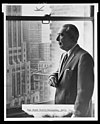
Adolf Augustus Berle, Jr. (1895–1971) with Gardiner Means was a foundational figure of modern corporate governance.
In 1967 Berle and Means issued a revised edition of their work, in which the preface added a new dimension. It was not only the separation of controllers of companies from the owners as shareholders at stake. They posed the question of what the corporate structure was really meant to achieve:
"Stockholders toil not, neither do they spin, to earn [dividends and share price increases]. They are beneficiaries by position only. Justification for their inheritance... can be founded only upon social grounds... that justification turns on the distribution as well as the existence of wealth. Its force exists only in direct ratio to the number of individuals who hold such wealth. Justification for the stockholder's existence thus depends on increasing distribution within the American population. Ideally the stockholder's position will be impregnable only when every American family has its fragment of that position and of the wealth by which the opportunity to develop individuality becomes fully actualized."[97]
Edward Chamberlin and industrial organization economics[edit]
In 1933 American economist Edward Chamberlin (1899–1967) published The Theory of Monopolistic Competition. The same year British economist Joan Robinson (1903–1983) published The Economics of Imperfect Competition. Together they founded Industrial Organization Economics. Chamberlin also founded Experimental Economics.Benjamin Graham, David Dodd and value investing[edit]
In 1934 after learning the lessons from the 1929 Stock Market Crash, Columbia University economists Benjamin Graham (1894–1976) and David Dodd (1895–1988) published Security Analysis, promoting Value Investing, which became the bible for investors. In 1949 Graham published The Intelligent Investor, which billionaire investor Warren Buffett later called "the best book about investing ever written".Leonid Kantorovich and linear programming[edit]
Main articles: Leonid Kantorovich and Linear programming
In 1939 Russian economist Leonid Kantorovich (1912–1986) developed Linear Programming for the optimal allocation of resources, receiving the 1975 Nobel Economics Prize.John von Neumann, Oskar Morgenstern, John Forbes Nash and Game Theory[edit]
In 1944 Hungarian-American mathematician John von Neumann (1903–1957) and Austrian School economist Oskar Morgenstern (1902–1977) published Theory of Games and Economic Behavior, founding Game Theory, which was widely adopted by economists. In 1951 Princeton mathematician John Forbes Nash Jr. (1928-) published the article Non-Cooperative Games, becoming the first to define a Nash Equilibrium for non-zero-sum games, receiving a share of the 1994 Nobel Economics Prize.Post-World War II economic thought: the Globalization Era[edit]
Main article: Globalization
The globalization era began with the end of World War II and the rise of the U.S. as the world's leading economic power, along with the United Nations. To prevent another global depression, the victorious U.S. forgave Germany its war debts and used its surpluses to rebuild Europe and encourage reindustrialization of Germany and Japan. In the 1960s it changed its role to recycling global surpluses. [98]John Kenneth Galbraith and The Affluent Society[edit]
Main article: John Kenneth Galbraith
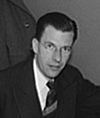
John K. Galbraith (1908–2006) began his career as a high flying "New Dealer", in the administration of Franklin Delano Roosevelt during the Great Depression. An interview from the early 1990s is here.[99]
Paul Samuelson[edit]
In contrast to Galbraith's linguistic style, the post-war economics profession began to synthesize much of Keynes' work with mathematical representations. Introductory university economics courses began to present economic theory as a unified whole in what is referred to as the neoclassical synthesis. "Positive economics" became the term created to describe certain trends and "laws" of economics that could be objectively observed and described in a value-free way, separate from "normative economic" evaluations and judgments.The best-selling textbook writer of this generation was Paul Samuelson (1915–2009), a student of Wassily Leontief. His Ph.D. dissertation was an attempt to show that mathematical methods could represent a core of testable economic theory. It was published as Foundations of Economic Analysis in 1947. Samuelson started with two assumptions. First, people and firms will act to maximize their self-interested goals. Second, markets tend towards an equilibrium of prices, where demand matches supply. He extended the mathematics to describe equilibrating behavior of economic systems, including that of the then new macroeconomic theory of John Maynard Keynes. Whilst Richard Cantillon had imitated Isaac Newton's mechanical physics of inertia and gravity in competition and the market,[14] the physiocrats had copied the body's blood system into circular flow of income models, William Jevons had found growth cycles to match the periodicity of sunspots, Samuelson adapted thermodynamics formulae to economic theory. Reasserting economics as a hard science was being done in the United Kingdom also, and one celebrated "discovery", of A. W. Phillips, was of a correlative relationship between inflation and unemployment. The workable policy conclusion was that securing full employment could be traded-off against higher inflation. Samuelson incorporated the idea of the Phillips curve into his work. His introductory textbook Economics was influential and widely adopted. It became the most successful economics text ever. Paul Samuelson was awarded the new Nobel Prize in Economics in 1970 for his merging of mathematics and political economy.
Kenneth Arrow[edit]
Main articles: Kenneth Arrow and Gérard Debreu
"If we exclude the possibility of interpersonal comparisons of utility, then the only methods of passing from individual tastes to social preferences which will be satisfactory and which will be defined for a wide range of sets of individual orderings are either imposed or dictatorial."[103]This sparked widespread discussion over how to interpret the different conditions of the theorem and what implications it had for democracy and voting. Most controversial of his four (1963) or five (1950/1951) conditions is the independence of irrelevant alternatives.
In the 1950s Kenneth Arrow and Gérard Debreu (1921–2004) developed the Arrow–Debreu model of general equilibria.
In 1963 Arrow published a paper which founded Health Economics.
In 1971 Arrow and Frank Hahn published General Competitive Analysis (1971), which reasserted a theory of general equilibrium of prices through the economy. With John Hicks, Arrow won the Nobel Economics Prize in 1972, the youngest recipient to date. The year before, 1971, US President Richard Nixon's had declared that "We are all Keynesians now"[104] The irony was that this was the beginning of a new revolution in economic thought. In 1983 Debreu won the Nobel Economics Prize.
The Chicago school of economics[edit]
Main articles: Monetarism and Chicago school of economics
See also: Monetarism, Milton Friedman, Gary Becker, Jacob Mincer, George Stigler, Frank Knight, and Robert Lucas, Jr.
The government-interventionist monetary and fiscal policies that the postwar Keynesian economists recommended came under attack by a group of theorists working at the University of Chicago, which came in the 1950s to be known as the Chicago School of Economics. Before World War II, the Old Chicago School of strong Keynesians was founded by Frank Knight (1885–1972), Jacob Viner (1892–1970), and Henry Calvert Simons (1899–1946). The second generation was known for a more conservative line of thought, reasserting a libertarian view of market activity that people are best left to themselves to be free to choose how to conduct their own affairs.Ronald Coase, Richard Posner, and the economic analysis of law[edit]
Ronald Coase (1910–2013) of the Chicago School of Economics was the most prominent economic analyst of law, and the 1991 Nobel Prize in Economics winner. His first major article The Nature of the Firm (1937) argued that the reason for the existence of firms (companies, partnerships, etc.) is the existence of transaction costs. Homo economicus trades through bilateral contracts on open markets until the costs of transactions make the use of corporations to produce things more cost-effective. His second major article The Problem of Social Cost (1960) argued that if we lived in a world without transaction costs, people would bargain with one another to create the same allocation of resources, regardless of the way a court might rule in property disputes. Coase used the example of an old legal case about nuisance named Sturges v Bridgman, where a noisy sweets maker and a quiet doctor were neighbors and went to court to see who should have to move.[105] Coase said that regardless of whether the judge ruled that the sweets maker had to stop using his machinery, or that the doctor had to put up with it, they could strike a mutually beneficial bargain about who moves house that reaches the same outcome of resource distribution. Only the existence of transaction costs may prevent this.[106] So the law ought to preempt what would happen, and be guided by the most efficient solution. The idea is that law and regulation are not as important or effective at helping people as lawyers and government planners believe.[107] Coase and others like him wanted a change of approach, to put the burden of proof for positive effects on a government that was intervening in the market, by analyzing the costs of action.[108]In 1973 Coase disciple Richard Posner (1939–) published Economic Analysis of Law, which became a standard textbook, causing him to become the most cited legal scholar of the 20th century. In 1981 he published The Economics of Justice, which claimed that judges have been interpreting common law as it they were trying to maximize economic welfare.
Gary Becker, Jacob Mincer and New Home Economics[edit]
Main articles: Gary Becker and Jacob Mincer
In the 1960s Gary Becker (1930–) and Jacob Mincer (1922–2006) of the Chicago School of Economics founded New Home Economics, which spawned Family Economics.Milton Friedman and Capitalism and Freedom[edit]
Main article: Milton Friedman
Milton Friedman (1912–2006) of the Chicago School of Economics is one of the most influential economists of the late 20th, century, receiving the Nobel Prize in Economics in 1976. He is known for A Monetary History of the United States (1963), in which he argued that the Great Depression was caused by the policies of the Federal Reserve. Friedman argues that laissez-faire government policy is more desirable than government intervention in the economy. Governments should aim for a neutral monetary policy oriented toward long-run economic growth, by gradual expansion of the money supply. He advocates the quantity theory of money, that general prices are determined by money. Therefore active monetary (e.g. easy credit) or fiscal (e.g. tax and spend) policy can have unintended negative effects. In Capitalism and Freedom (1962), Friedman wrote:"There is likely to be a lag between the need for action and government recognition of the need; a further lag between recognition of the need for action and the taking of action; and a still further lag between the action and its effects."[109]Friedman was also known for his work on the consumption function, the Permanent Income Hypothesis (1957), which Friedman referred to as his best scientific work.[110] This work contended that rational consumers would spend a proportional amount of what they perceived to be their permanent income. Windfall gains would mostly be saved. Tax reductions likewise, as rational consumers would predict that taxes would have to rise later to balance public finances. Other important contributions include his critique of the Phillips Curve, and the concept of the natural rate of unemployment (1968). This critique associated his name with the insight that a government that brings about higher inflation cannot permanently reduce unemployment by doing so. Unemployment may be temporarily lower, if the inflation is a surprise, but in the long run unemployment will be determined by the frictions and imperfections in the labor market.
Eugene Fama and the efficient market hypothesis[edit]
In 1965 Chicago School economist Eugene Fama (1939–) published The Behavior of Stock Market Prices, which found that stock market prices follow a random walk, proposing the Efficient Market Hypothesis, that randomness is characteristic of a perfectly functioning financial market. The same year Paul Samuelson published a paper concluding the same thing with a mathematical proof, sharing the credit. Earlier in 1948 Holbrook Working (1895–1985) published a paper saying the same thing, but not in a mathematical form. In 1970 Fama published Efficient Capital Markets: A Review of Theory and Empirical Work, proposing that efficient markets can be strong, semi-strong, or weak, and also proposing the Joint Hypothesis Problem, that the idea of market efficiency can't be rejected without also rejecting the market mechanism.James E. Meade and international economics[edit]
Main articles: James E. Meade and International trade
In 1951 English economist James E. Meade (1907–1995) published The Balance of Payments, volume 1 of "The Theory of International Economic Policy", which proposed the theory of domestic divergence (internal and external balance), and promoted policy tools for governments. In 1955 he published volume 2 Trade and Welfare, which proposed the theory of the "second-best", and promoted protectionism. He shared the 1977 Nobel Economic Prize with Bertil Ohlin.Sir Arthur Lewis, Simon Kuznets and development economics[edit]
In 1954 Saint Lucian economist Sir Arthur Lewis (1915–1991) proposed the Dual Sector Model of Development Economics, which claims that capitalism expands by making use of an unlimited supply of labor from the backward non-capitalist "subsistence sector" until it reaches the Lewisian breaking point where wages begin to rise, receiving the 1979 Nobel Economics Prize.In 1955 Russian-born American economist Simon Kuznets (1901–1985), who introduced the concept of Gross domestic product (GDP) in 1934 published an article revealing an inverted U-shaped relation between income inequality and economic growth, meaning that economic growth increases income disparity between rich and poor in poor countries, but decreases it in wealthy countries. In 1971 he received the Nobel Economics Prize.
Robert Solow, Trevor Swan and the Neoclassical Growth Model[edit]
In 1956 American economist Robert Solow (1924–) and Australian economist Trevor Swan (1918–89) proposed the Solow-Swan Neoclassical Growth Model, based on productivity, capital accumulation, population growth, and technological progress. In 1956 Swan also proposed the Swan Diagram of the internal-external balance. In 1987 Solow was awarded the Nobel Economics Prize.New Economic History (Cliometrics)[edit]
Main article: New economic history
In 1958 American economists Alfred H. Conrad (1924–1970) and John R. Meyer (1927–2009) founded New Economic History, which in 1960 was called Cliometrics by American economist Stanley Reiter (1925–) after Clio, the muse of history. It uses neoclassical economic theory to reinterpret historical data, spreading throughout academia, causing economic historians untrained in economics to disappear from history departments. American cliometric economists Douglass Cecil North (1920–) and Robert William Fogel (1926–2013) were awarded the 1993 Nobel Economics Prize.John R. Meyer and transportation economics[edit]
Main articles: John R. Meyer and Transportation economics
In 1959 American economist John R. Meyer (1927–2009) founded Transportation Economics.Walt Whitman Rostow and the five stages of economic development[edit]
Main articles: Walt Whitman Rostow and Rostovian take-off model
In 1960 American economist Walt Whitman Rostow (1916–2003) published The Stages of Economic Growth: A Non-Communist Manifesto, proposing the Rostovian Takeoff Model of Economic Growth, with five stages: traditional society, preconditions for takeoff, takeoff, drive to maturity, and age of high mass consumption.James M. Buchanan, Gordon Tullock, public choice theory, and constitutional economics[edit]
Main articles: James M. Buchanan, Gordon Tullock, Public choice theory, and Constitutional economics
In 1962 American economists James M. Buchanan (1919–2013) and Gordon Tullock (1922–) published The Calculus of Consent, which revived Public Choice Theory by differentiating politics (the rules of the game) from public policy (the strategies to adopt within the rules), founding Constitutional Economics, the economic analysis of constitutional law. Buchanan was awarded the 1986 Nobel Economics Prize.Marcus Fleming, Robert Mundell and the Impossible Trinity[edit]
Main articles: Marcus Fleming and Robert Mundell
In 1962–1963 Scottish economist Marcus Fleming (1911–1976) and Canadian economist Robert Mundell (1932–) published the Mundell-Fleming Model of the Economy, an extension of the IS-LM Model to an open economy, proposing the Impossible Trinity of fixed exchange rate, free capital movement, and an independent monetary policy, only two of which can be maintained simultaneously. Mundell received the 1999 Nobel Economics Prize.The saltwater and freshwater schools of economics[edit]
In the early 1970s the Saltwater and Freshwater Schools of Economics in the U.S. split on basic issues of macroeconomic theory, with the freshwater school emphasizing the ability of market failures to defeat government discretionary spending, advocating structural reforms.George Akerlof, Joseph E. Stiglitz and information economics[edit]
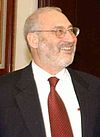
Joseph E. Stiglitz (1943–) has both been successful as an economist and a popular author. He talks about his book Making Globalization Work here.[111]
Joseph E. Stiglitz (1943–) also received the Nobel Economics Prize in 2001 for his work in Information Economics. He has served as chairman of President Clinton's Council of Economic Advisers, and as chief economist for the World Bank. Stiglitz has taught at many universities, including Columbia, Stanford, Oxford, Manchester, Yale, and MIT. In recent years he has become an outspoken critic of global economic institutions. In Making Globalization Work (2007), he offers an account of his perspectives on issues of international economics:
"The fundamental problem with the neoclassical model and the corresponding model under market socialism is that they fail to take into account a variety of problems that arise from the absence of perfect information and the costs of acquiring information, as well as the absence or imperfections in certain key risk and capital markets. The absence or imperfection can, in turn, to a large extent be explained by problems of information."[112]
Harold Demsetz, Armen Alchian and new institutional economics[edit]
In 1972 American economists Harold Demsetz (1930–) and Armen Alchian (1914–2013) published Production, Information Costs and Economic Organization, founding New Institutional Economics, an updating of the works of Ronald Coase (1910–) with mainstream economics.Leonid Hurwicz, Eric Maskin, Roger Myerson and market design theory[edit]
In 1973 Russian-American mathematician-economist Leonid Hurwicz (1917–2008) founded Market (Mechanism) Design Theory, a.k.a. Reverse Game Theory, which allows people to distinguish situations in which markets work well from those in which they do not, aiding the identification of efficient trading mechanisms, regulation schemes, and voting procedures; he developed the theory with Eric Maskin (1950–) and Roger Myerson (1951–), sharing the 2007 Nobel Economics Prize with them.Paul Krugman and new trade theory[edit]
Main articles: Paul Krugman and International economics
In 1979 American economist Paul Krugman (1953–) published a paper founding New Trade Theory, which attempts to explain the role of increasing returns to scale and network effects in international trade. In 1991 he published a paper founding New Economic Geography. His textbook International Economics (2007) appears on many undergraduate reading lists. He was awarded the Nobel Prize in Economics in 2008.Robert Lucas, Jr., Fynn Kydland, Edward C. Prescott, new classical macroeconomics, and the new neoclassical synthesis[edit]
Main articles: New Classical Economics, Robert Lucas, Jr., Finn Kydland, Edward C. Prescott, Thomas J. Sargent, Neil Wallace, New Classical economics, Real business cycle theory, Dynamic stochastic general equilibrium, and New neoclassical synthesis
In the early 1970s American Chicago School economist Robert E. Lucas, Jr. (1937–) founded New Classical Macroeconomics based on Milton Friedman's monetarist critique of Keynesian macroeconomics, and the idea of rational expectations,[113] first proposed in 1961 by John F. Muth, opposing the idea that government intervention can or should stabilize the economy.[114] The Policy-Ineffectiveness Proposition (1975)[115] of Thomas J. Sargent (1943–) and Neil Wallace (1939–), which seemed to refute a basic assumption of Keynesian economics was also adopted. The Lucas aggregate supply function states that economic output is a function of money or price "surprise." Lucas was awarded the 1995 Nobel Economics Prize.Lucas' model was superseded as the standard model of New Classical Macroeconomics by the Real Business Cycle Theory, proposed in 1982 by Finn Kydland (1943–) and Edward C. Prescott (1940–), which seeks to explain observed fluctuations in output and employment in terms of real variables such as changes in technology and tastes. Assuming competitive markets, real business cycle theory implies that cyclical fluctuations are optimal responses to variability in technology and tastes, and that macroeconomic stabilization policies must reduce welfare.[116]
In 1982 Kydland and Prescott also founded the theory of Dynamic Stochastic General Equilibrium (DSGE), large systems of microeconomic equations combined into models of the general economy, which became central to the New Neoclassical Synthesis, incorporating theoretical elements such as sticky prices from New Keynesian Macroeconomics. They shared the 2004 Nobel Economics Prize.
New Keynesian macroeconomics[edit]
Main articles: New Keynesian, Edmund Phelps, John B. Taylor, Sticky (economics), George Akerlof, Janet Yellen, Huw Dixon, Michael Woodford (economist), and Julio Rotemberg
In 1977 Edmund Phelps (1933–) (who was awarded the 2006 Nobel Economics Prize) and John B. Taylor (1946–) published a paper proving that staggered setting of wages and prices gives monetary policy a role in stabilizing economic fluctuations if the wages/prices are sticky, even when all workers and firms have rational expectations, which caused Keynesian economics to make a comeback among mainstream economists with New Keynesian Macroeconomics. Its central theme is the provision of a microeconomic foundation for Keynesian macroeconomics, obtained by identifying minimal deviations from the standard microeconomic assumptions which yield Keynesian macroeconomic conclusions, such as the possibility of significant welfare benefits from macroeconomic stabilization.[117]In 1985 George Akerlof (1940–) and his economist wife Janet Yellen (1946–) published menu costs arguments showing that, under imperfect competition, small deviations from rationality generate significant (in welfare terms) price stickiness.[118]
In 1987 British economist Huw Dixon (1958–) published A simple model of imperfect competition with Walrasian features, the first work to demonstrate in a simple general equilibrium model that the fiscal multiplier could be increasing with the degree of imperfect competition in the output market, helping develop New Keynesian economics.
In 1997 American economist Michael Woodford (1955–) and Argentine economist Julio Rotemberg (1953–) published the first paper describing a microfounded DSGE New Keynesian macroeconomic model.
Sidney Weintraub, Paul Davidson and Post-Keynesian economics[edit]
In 1975 American economists Sidney Weintraub (1914–1983) and Henry Wallich (1914–1988) published A Tax-Based Incomes Policy, promoting Tax-Based Incomes Policy (TIP), using the income tax mechanism to implement an anti-inflationary incomes policy. In 1978 Weintraub and American economist Paul Davidson (1930–) founded the Journal of Post Keynesian Economics. This opened the door to many younger economists such as E. Ray Canterbery (1935-). Always Post Keynesian in his style and approach, Canterbery went on to make contributions outside traditional Post Keynesianism. His friend, John Kenneth Galbraith, was a long-time influence.Amartya Sen and Development economics[edit]
Main articles: Amartya Sen and Development economics
Indian economist Amartya Sen (1933–) is a leading development and welfare economist who expressed considerable skepticism about the validity of neoclassical assumptions, and was highly critical of rational expectations theory, devoting his work to Development Economics and human rights. He was awarded the Nobel Prize in Economics in 1998.Muhammad Yunus and microcredit[edit]
In the 1970s Bangladeshi economist Muhammad Yunus (1940–) developed the concepts of Microcredit and Microfinance, receiving the 2006 Nobel Peace Prize.The Feldstein–Horioka Puzzle[edit]
In 1980 American economists Martin Feldstein (1939–) and Charles Horioka (1956–) published an article revealing that in the long run capital tends to stay in the home country instead of flowing to the countries with the most productive investment opportunities, which was later called the Feldstein–Horioka puzzle.Robert E. Hall and the flat tax[edit]
In 1981 American economist Robert E. Hall (1943–) and American political scientist Alvin Rabushka proposed the Hall–Rabushka flat tax to simplify the U.S. federal income tax. The U.S. didn't accept it, but after the fall of the Soviet Union many former Soviet republics including Russia implemented it.The dot-com bubble[edit]
In 2001 the Dot-Com Bubble of 1997–2000 caused American economists Ben Bernanke (1953–) and Mark Gertler (1951–) to publish Should Central Banks Respond to Movements in Asset Prices?, recommending that the Federal Reserve limit its policy to targeting inflation and price stability rather than the more aggressive approach of managing asset bubbles. In 2006 Bernanke became the Federal Reserve chairman.The 2008–2009 Keynesian Resurgence and the Great Recession[edit]
Main article: 2008–09 Keynesian resurgence
The 2008–2009 Keynesian Resurgence emerged as a short-lived consensus among policy makers and economists for a Keynesian response to the Financial Crisis of 2007–2008, contrasting sharply with the previous economic orthodoxy in its support for government intervention in the economy. Key figures included Dominique Strauss-Kahn (1949–), Olivier Blanchard (1948–), Gordon Brown (1951–), Paul Krugman (1953–), and Martin Wolf (1946–).[119] [120][121] The crisis worsened into the global Great Recession, which still hasn't ended.The 2010 Austerity Wave[edit]
In October 2009 Italian economists Alberto Alesina (1957–) and Silvia Ardagna published Large Changes in Fiscal Policy: Taxes Versus Spending,[122] a much-cited academic paper aimed at showing that fiscal austerity measures did not hurt economies, and actually helped their recovery, refuting the Keynesians. In 2010 the paper Growth in a Time of Debt by American economists Carmen Reinhart (1955–) and Kenneth Rogoff (1953–) was published, analyzing public debt and GDP growth among 20 advanced economies and claiming that high debt countries grew at −0.1% since WWII, which was accepted, setting the stage for a wave of fiscal austerity that swept Europe. In April 2013 some analysts at the IMF and the Roosevelt Institute exposed flaws in the Reinhart-Rogoff paper, claiming +2.2%. On June 6, 2013 Paul Krugman published How the Case for Austerity Has Crumbled[123] in The New York Review of Books, arguing for an end to austerity measures.Other contemporary economists[edit]
Main article: Robert J. Shiller
In 1981 American economist Robert J. Shiller (1946–) published Do stock prices move too much to be justified by subsequent changes in dividends?, shocking the economics community by challenging the accepted Efficient Market Hypothesis, arguing that in a rational stock market, investors would base stock prices on the expected receipt of future dividends, discounted to a present value. In 2000 he published Irrational Exuberance, warning of a coming stock market collapse. In 2003 he published Is There a Bubble in the Housing Market?, going on to predict the late 2008 U.S. housing market collapse a year in advance.
Main article: Daron Acemoğlu
In 2001 Turkish economist Daron Acemoğlu (1967–) et al. published The Colonial Origins of Comparative Development, arguing that Europeans set up growth-inducing institutions in areas where the disease environment was favorable for their settlement, while in unfavorable environments such as central Africa they set up extractive institutions instead.
Main article: William Easterly
In 2001 American economist William Easterly (1957–) published The Elusive Quest for Growth: Economists' Adventures and Misadventures in the Tropics, criticizing foreign aid for failing to insure sustainable growth. In 2006 he published The White Man's Burden: Why the West's Efforts to Aid the Rest Have Done So Much Ill and So Little Good, a reply to Jeffrey Sachs' 2005 book The End of Poverty, dividing foreign aid providers into top-down Planners and bottom-up Searchers, claiming that the latter have the best chance for success.
Main article: Ha-Joon Chang
In 2002 South Korean heterodox economist Ha-Joon Chang (1963–) published Kicking Away the Ladder: Development Strategy in Historical Perspective, which claims that developed countries climb to the top then try to keep developing countries down by kicking away the ladder. In 2008 he published Bad Samaritans: The Myth of Free Trade and the Secret History of Capitalism, which claims that the modern economic superpowers got that way by shameless protectionism and government intervention in industry, and are ramming a fairy tale about free trade down developing countries' throats.
Main article: Jean-Jacques Laffont
In 2002 French economist Jean-Jacques Laffont (1947–2004) published The Theory of Incentives: The Principal-Agent Model, discussing the Principal-Agent Problem.
Main article: Carlota Perez
In 2002 Venezuelan economist Carlota Perez (1939–) published Technological Revolutions and Financial Capital: The Dynamics of Bubbles and Golden Ages, claiming techno-economic paradigm shifts in five past technological revolutions.
Main article: Jeffrey Sachs
In 2005 American economist Jeffrey Sachs (1954–) published The End of Poverty: Economic Possibilities for Our Time, which argues that extreme poverty (defined by the World Bank as an income of less than $1 a day) can be eliminated globally by the year 2025 via carefully planned development aid.
Main article: Susan Athey
In 2007 American economist Susan Athey (1970–) became the first female to win the John Bates Clark Medal for the top American economist under age 40. She went on to become chief economist at Microsoft.
Main article: Graciela Chichilnisky
In 2007 Argentine-American economist Graciela Chichilnisky (1944–) was the lead author of the Fourth Assessment Report of the Intergovernmental Panel on Climate Change (IPCC), which shared the 2007 Nobel Peace Prize with U.S. vice-president Al Gore. She was the originator of the Carbon Credit Emissions Trading Market proposal.
Main article: Elinor Ostrom
In 2009 American political economist Elinor Ostrom (1933–2012) became the first woman to be awarded the Nobel Economics Prize.
Main article: Dambisa Moyo
In 2009 Zambian economist Dambisa Moyo (1969–) published Dead Aid: Why Aid is Not Working and How There is Another Way for Africa, followed by How the West Was Lost: Fifty Years of Economic Folly and the Stark Choices That Lie Ahead (2011), and Winner Take All: China's Race for Resources and What It Means for the World (2012). They were all New York Times bestsellers.
Main articles: Abhijit Banerjee and Esther Duflo
In 2011 Indian economist Abhijit Banerjee (1961–) and French economist Esther Duflo (1972–) published Poor Economics: A Radical Rethinking of the Way to Fight Global Poverty, based on randomized control trials.
Main article: Dani Rodrik
In 2011 Turkish economist Dani Rodrik (1957–) published The Globalization Paradox, arguing that only two of the triad of hyperglobalization, national sovereignty, and democratic politics can be sustained, and that globalization should be the first to be relaxed.
Main article: Nouriel Roubini
In 2011 after successfully predicting the Great Recession, Istanbul-born American economist Nouriel Roubini (1958–) published A G-Zero World, which claimed that "Old models of understanding global dynamics are struggling" to keep up with rapid changes:- "We are now living in a G-Zero world, one in which no single country or bloc of countries has the political and economic leverage—or the will—to drive a truly international agenda. The result will be intensified conflict on the international stage over vitally important issues, such as international macroeconomic coordination, financial regulatory reform, trade policy, and climate change. This new order has far-reaching implications for the global economy, as companies around the world sit on enormous stockpiles of cash, waiting for the current era of political and economic uncertainty to pass. Many of them can expect an extended wait."[124][125]
Main article: Sandy Darity, Jr.
In February 2012 after criticizing Pres. Barack Obama for being too pro-private sector, African-American economist Sandy Darity, Jr. (1952–) called for the creation of a National Investment Employment Corps that would guarantee all U.S. citizens over the age of 18 a job at a minimal salary of $20,000, as well as $10,000 in benefits, including medical coverage and retirement saving.
Main article: Raghuram Rajan
In May 2012 Indian economist Raghuram Rajan (1963–) (chief economist of the IMF in 2003–2007, known for predicting the Great Recession) got into a debate with Paul Krugman over the best way to end the Great Recession, with Rajan advocating supply-side solutions, and Krugman advocating Keynesian solutions.
Main article: George Gilder
On June 10, 2013 George Gilder (1939-) published Knowledge and Power: The Information Theory of Capitalism and How it is Revolutionizing our World, attempting to reformulate economics in terms of the information theory of Alan Turing and Claude Shannon.See also[edit]
- Articles
Notes[edit]
- Jump up ^ Mattick, Paul (2001-07-08). "Who Is the Real Adam Smith?". The New York Times. Retrieved 2008-05-14.
- Jump up ^ Hoaas, David J.; Madigan, Lauren J. (1999). "A citation analysis of economists in principles of economics textbooks". The Social Science Journal 36 (3): 525–32. doi:10.1016/S0362-3319(99)00022-1.
- Jump up ^ Mark Blaug.Economic theory in retrospect. Cambridge University Press. 1997. ISBN 978-0-521-57701-4 p. 34
- Jump up ^ David Held, Models of Democracy (Polity, 2006) 3rd Ed., pp. 11 ff.
- ^ Jump up to: a b Aristotle (350 BCE) Politics Book II, Part V
- Jump up ^ Aristotle (350 BCE) Politics Book I, Part X
- Jump up ^ Book I, Part III]
- ^ Jump up to: a b M. M. Austin, Pierre Vidal-Naquet (1980). Economic and Social History of Ancient Greece. University of California Press. ISBN 9780520042674. Retrieved 2012-04-11.
- Jump up ^ Aristotle (350 BCE) Politics Book I, Part XI
- Jump up ^ Aristotle (350 BCE) Politics Book I, Part IX
- ^ Jump up to: a b Mochrie (2005) p. 5
- Jump up ^ Muqaddimah 2 1995 p 30
- Jump up ^ Fusfeld (1994) p. 15
- ^ Jump up to: a b Fusfeld (1994) p. 21
- Jump up ^ Locke (1689) Chapter 9, section 124
- Jump up ^ Locke (1689) Chapter 5, sections 26–27.
- Jump up ^ Locke (1691) Considerations Part I, Thirdly
- Jump up ^ Murray N. Rothbard An Austrian Perspective on the History of Economic Thought, vol. 1, Economic Thought Before Adam Smith (1995) Ludwig von Mises Institute Retrievedf 2012-05-16
- Jump up ^ Sarah B. Pomeroy, Xénophon – Xenophon, Oeconomicus: a social and historical commentary Clarendon Press, 1994 Retrieved 2012-05-16
- Jump up ^ Strong's ConcordancesBiblos & The NAS New Testament Greek Lexicon (Strong's Number: 3624) Bible Study Tools – Retrieved 2012-05-16
- Jump up ^ Douglas Harper Etymology online Retrieved 2012-05-16
- Jump up ^ M. I. Finley (was Professor of Ancient History and Master of Darwin College at Cambridge University)The Ancient Economy University of California Press, 1 Jan 1989 , Retrieved 2012-05-16
- Jump up ^ Edwin Cannan (editor)Adam Smith – Lectures On Justice, Police, Revenue And Arms Kessinger Publishing, 30 Apr 2004 Retrieved 2012-05-16
- Jump up ^ Danbom (1997) Rural Development Perspectives, vol. 12, no. 1 p. 15 Why Americans Value Rural Life by David B. Danbom
- ^ Jump up to: a b Fusfeld (1994) p. 24
- Jump up ^ Smith (1776) Book I, Chapter 2, para 2
- ^ Jump up to: a b Smith (1776) p. 533
- Jump up ^ Smith (1776) Book I, Chapter 5, para 1
- Jump up ^ Smith (1776) Book I, Chapter 7, para 9
- Jump up ^ Smith (1776) Book I, Chapter 10, para 82
- Jump up ^ Smith (1776) Book I, Chapter 7, para 26
- Jump up ^ Hague (2004) pp. 187, 292
- Jump up ^ Stephen (1898) p. 8."
- Jump up ^ Keynes (1936) Chapter 1, footnote
- Jump up ^ Bentham (1791) Chapter I, para I
- Jump up ^ Bentham (1791) Chapter II, para I
- Jump up ^ Bentham (1791) Chapter IV
- Jump up ^ Bentham (1791) Chapter I, para IV
- Jump up ^ Fusfeld (1994) p. 47
- Jump up ^ Thornton (1802) The Paper Credit of Great Britain
- Jump up ^ Historical figures – Thomas Malthus (1766–1834), BBC
- Jump up ^ "Thomas Robert Malthus, 1766–1834". The History of Economic Thought Website. Archived from the original on 2013-08-08. Retrieved 2013-08-08. "Malthus denied the validity of Say's Law and argued that there could be a 'general glut' of goods. Malthus believed that economic crises were characterized by a general excess supply caused by insufficient consumption."
- Jump up ^ "Rationale and Core Principles", The International Society of Malthus
- Jump up ^ Who is Thomas Malthus?, ALL About Science
- Jump up ^ In 1819 this was 9 shillings, 11 pence; Fusfeld (1994) p. 57
- Jump up ^ David Ricardo, Economic History Services
- Jump up ^ David Ricardo's Contributions to Economics, The Victorian Web
- Jump up ^ "David Ricardo", Library of Economics and Liberties
- Jump up ^ David Ricardo, 1772–1823, The History of Economic Thought Website
- Jump up ^ [1]
- Jump up ^ [2]
- Jump up ^ [3]
- Jump up ^ Proudhon (1846) Volume 1
- Jump up ^ Proudhon (1846) Volume 2
- Jump up ^ Mill (1848) Book V, Chapter II; Interestingly Mill amended his wording from the 3rd edition in 1852, see [4]; see generally, Variations in the Editions of J.S. Mill's Principles of Political Economy, M.A. Ellis, Economic Journal, vol. 16, June 1906, pp. 291–302.
- Jump up ^ Copleston, Frederick. Social Philosophy in France, A History of Philosophy, Volume IX, Image/Doubleday, 1994, p. 67
- Jump up ^ John Stuart Mill: Overview, The Internet Encyclopedia of Philosophy.
- Jump up ^ Pressman (2006) p. 44
- Jump up ^ John Stuart Mill, 1806–1873, The History of Economic Thought: "Happily, there is nothing in the laws of Value which remains for the present or any future writer to clear up; the theory of the subject is complete: the only difficulty to be overcome is that of so stating it as to solve by anticipation the chief perplexities which occur in applying it." (Mill's quote)
- Jump up ^ Stanford Encyclopedy of Philosophy – John Stuart Mill section Political Economy
- Jump up ^ Pressman (2006) p. 45
- Jump up ^ Mill (1871) Book 4, Chapter 6
- Jump up ^ Stigler (1965) pp. 1–15
- Jump up ^ Pressman (2006) p.46
- Jump up ^ Bastiat.org
- Jump up ^ Die Lage der arbeitenden Klassen von England in 1844
- Jump up ^ Marx (1859) Zur Kritik der Politischen Oekonomie, Berlin, p. 3.
- Jump up ^ In Marx's words, "the exchange of commodities is evidently an act characterized by a total abstraction from use value."
- Jump up ^ Marx (1867) Volume I, Part I, Chapter 1, para 14. In Marx's words, "The labor time socially necessary is that required to produce an article under the normal conditions of production, and with the average degree of skill and intensity prevalent at the time."
- Jump up ^ Marx (1867) Volume I, Part I, Chapter 1, Section 4, para 123
- Jump up ^ Marx (1867) Volume I, Part III, Chapter 9, Section 1
- Jump up ^ Marx (1867) Volume I, Part II, Chapter VI, para 10. In Marx's words: "Therefore the labor-time requisite for the production of labor-power reduces itself to that necessary for the production of those means of subsistence; in other words, the value of labor-power is the value of the means of subsistence necessary for the maintenance of the laborer."
- Jump up ^ Menger, Carl (1871) Grundsätze der Volkswirtschaftslehre,full text in html
- Jump up ^ Jevons (1878) p. 334
- Jump up ^ • Alan Kirman (2008). "Pareto, Vilfredo (1848–1923)", Efficiency or ‘Pareto optimality', The New Palgrave Dictionary of Economics. Abstract.
• Pareto (1897). Cours d'économie politique, v. 2.
• Pareto ([1906] 1971). Manual of Political Economy, ch. 6, Mathematical Appendix, sect. 145–52. Translation of French edition from 1927. - Jump up ^ Principles of Economics, by Alfred Marshall, at the Library of Economics and Liberty
- Jump up ^ Buchholz (1989) p. 151
- Jump up ^ Veblen, Thorstein Bunde; "The Preconceptions of Economic Science" Pt III, Quarterly Journal of Economics v14 (1900).
- Jump up ^ Colander, David; The Death of Neoclassical Economics.
- Jump up ^ Alessandro Roncaglia. The wealth of ideas: a history of economic thought. Cambridge University Press. 2005. ISBN 978-0-521-84337-9. p. 431
- Jump up ^ "Biography of F. A. Hayek (1899–1992)". Retrieved 2009-06-26.
- Jump up ^ Law, legislation and liberty (1970)
- Jump up ^ Stabile, Donald R. "Veblen and the Political Economy of the Engineer: the radical thinker and engineering leaders came to technocratic ideas at the same time", American Journal of Economics and Sociology (45:1) 1986, 43–44.
- Jump up ^ "The Engineers and the Price System" (PDF). Retrieved 2013-03-29.
- Jump up ^ L. Randall Wray, ed. (2004). Credit and State Theories of Money: The Contributions of A. Mitchell Innes. Edward Elgar Publishing. ISBN 1-84376-513-6.
- Jump up ^ Keynes (1919) The Economic Consequences of the Peace at The Library of Economics and Liberty
- Jump up ^ Keynes (1919) Chapter III, para 20
- Jump up ^ Keynes (1919) Chapter V, para 43
- Jump up ^ Keynes (1919) Chapter VI, para 4
- Jump up ^ Keynes (1919) Chapter VII, para 7
- Jump up ^ Keynes (1919) Chapter VII, para 30
- Jump up ^ Keynes (1919) Chapter VII, para 48
- Jump up ^ Keynes (1919) Chapter VII, para 58
- Jump up ^ e.g. Etienne Mantioux (1946) The Carthaginian Peace, or the Economic Consequences of Mr. Keynes
- Jump up ^ Keynes (1923) Chapter 3
- Jump up ^ This was not accepted by the United States Congress at the time, but arose later through the General Agreement on Tariffs and Trade of 1947 and the World Trade Organisation of 1994
- Jump up ^ Berle (1967) p. xxiii
- Jump up ^ The Globalist July 30, 2013
- Jump up ^ "Conversations with History: John Kenneth Galbraith". YouTube. 2008-06-12. Retrieved 2013-03-29.
- Jump up ^ Galbraith (1958) Chapter 2; n.b. though Galbraith claimed to coin the phrase "conventional wisdom", the phrase is used several times in Thorstein Veblen's book The Instinct of Workmanship.
- Jump up ^ Galbraith (1958) Chapter 11
- Jump up ^ "What can be done to improve the current situation? Regulation vs deregulation and lessons learnt from previous financial crisis". YouTube. 2009-01-13. Retrieved 2013-03-29.
- Jump up ^ Kenneth Arrow, "A Difficulty in the Concept of Social Welfare" (1950).
- Jump up ^ , announcing wage and price controls. He lifted this from a comment by Milton Friedman in 1965 which formed a Time article title, Friday, Dec. 31, 1965. See below.
- Jump up ^ Sturges v Bridgman (1879) 11 Ch D 852
- Jump up ^ Coase (1960) IV, 7
- Jump up ^ Coase (1960) V, 9
- Jump up ^ Coase (1960) VIII, 23
- Jump up ^ Friedman (1967) p.
- Jump up ^ "Charlie Rose Show". 2005-12-26.
- Jump up ^ "Authors@Google: Joseph Stiglitz". YouTube. 2006-10-13. Retrieved 2013-03-29.
- Jump up ^ Stiglitz (1996) p. 5
- Jump up ^ Mankiw, 1647–1648.
- Jump up ^ Manikw, N. Greg. "A Quick Refresher Course in Macroeconomics." Journal of Economic Literature, Vol. 28, No. 4. (Dec., 1990), p. 1647.
- Jump up ^ Mankiw, 1649.
- Jump up ^ Mankiw, 1653.
- Jump up ^ Mankiw, 1655.
- Jump up ^ Mankiw, 1657.
- Jump up ^
- Bateman, Bradley; Toshiaki, Hirai; Marcuzzo, Maria Cristina (2010). The Return to Keynes. Harvard University Press. ISBN 0-674-03538-0.
- Jump up ^ Henry Farrell and John Quiggin (March 2012). "Consensus, Dissensus and Economic Ideas: The Rise and Fall of Keynesianism During the Economic Crisis" (PDF). The Center for the Study of Development Strategies. Retrieved 2012-05-29.
- Jump up ^ Chris Giles, Ralph Atkins and Krishna Guha. "The undeniable shift to Keynes". The Financial Times. Retrieved 2009-01-23.
- Jump up ^ [5]
- Jump up ^ [6]
- Jump up ^ Roubini, Nouriel, and Bremmer, Ian. "A G-Zero World", Foreign Affairs, March/April 2011
- Jump up ^ Bennington, Ash. "Nouriel Roubini on the Origins of the G-Zero World", CNBC", March 14, 2011
References[edit]
Primary sources[edit]
|
|
Secondary sources[edit]
- Allen, William (1977). "Economics, Economists, and Economic Policy: Modern American Experiences", in History of Political Economy, Volume 9, no. 1, pp. 48–88. Duke Univ Press. Reprinted in Econ Journal Watch 7[3]: pp. 235–74, Sept 2010. [7]
- Blaug, Mark (1997). Economic Theory in Retrospect, 5th ed.. Cambridge University Press. Description & chapter links, pp. vii –xvi.
- _____ (2001). "No History of Ideas, Please, We're Economists", Journal of Economic Perspectives, 15(1), pp. 145–64 (press +).
- Buchholz, Todd G. (1989). New Ideas from Dead Economists, New York, Penguin Group. p. 151
- Cossa, Luigi. (1893). An Introduction to the Study of Political Economy, London and New York: Macmillan [8]
- Danbom, David B. (1997). Why Americans Value Rural Life, Rural Development Perspectives, vol. 12, no. 1, pp. 15–18
- Ekelund, Robert B., Jr. and Robert F. Hébert (2007). A History of Economic Theory and Method. Waveland Press. 5th ed. ISBN 1-57766-486-8.Description.
- Fusfeld, Daniel R. (1994). The Age of the Economist, Harper Collins, 7th Ed. ISBN 0-673-46805-4
- Hague, William (2004). William Pitt the Younger Harper Perennial ISBN 0-00-714720-1
- Heilbroner, Robert (1953; 1999 7th ed.). The Worldly Philosophers, Simon & Schuster. ISBN 0-684-86214-X
- Lee, Frederic S. (2009). A History of Heterodox Economics: Challenging the Mainstream in the Twentieth Century, Routledge. Description.
- Macfie, Alec Lawrence (1955). "The Scottish Tradition in Economic Thought". Econ Journal Watch 6(3): 389–410. Reprinted from Scottish Journal of Political Economy 2(2): 81–103 [9]
- Markwell, Donald (2006). John Maynard Keynes and International Relations: Economic Paths to War and Peace, Oxford University Press.
- Medema, Steven G., and Warren J. Samuels (2003). The History of Economic Thought: A Reader. Routledge. Description & chapter-preview links.
- Mochrie, Robert (2005). Justice in Exchange: The Economic Philosophy of John Duns Scotus
- Nicola, PierCarlo (2000). Mainstream Mathematical Economics in the 20th Century. Springer. ISBN 978-3-540-67084-1.
- Nasar, Sylvia (2011). Grand Pursuit: The Story of Economic Genius, Simon & Schuster. Description and excerpt.
- From The New Palgrave Dictionary of Economics (2008), 2nd Edition. Abstract links for:
-
- "United States, economics in (1776–1885)" by Stephen Meardon.
- "United States, economics in (1885–1945)" by Bradley W. Bateman.
- "United States, economics in (1945 to present)" by Roger E. Backhouse.
- "American exceptionalism" by Louise C. Keely.
- Pressman, Steven (2006). Fifty Major Economists, Routledge, ISBN 0-415-36649-6
- Ptak, Justin (n.d.). "The Prehistory of Modern Economic Thought: The Aristotle in Austrian Theory "
- Rothbard, Murray (1995). An Austrian Perspective on the History of Economic Thought, von Mises Institute, ISBN 978-0945466482
- Samuelson, Paul A. and William A. Barnett, ed. (2007). Inside the Economist's Mind: Conversations with Eminent Economists, Wiley. Description, contents, and preview.
- Screpanti, Ernesto and Zamagni, Stefano (2005). An Outline of the History of Economic Thought, 2nd ed. Oxford University Press. Description & ch.-preview links, pp. xi-xviii.
- Schumpeter, Joseph (1954). History of Economic Analysis, Description. Chapter-preview links for Parts I-V (arrow-page searchable). Routledge Ed. 1994, ISBN 0-415-10892-6
- Spengler, Joseph J., and William R. Allen, ed. (1960). Essays in Economic Thought: Aristotle to Marshall. Rand McNally.
- Spiegel, Henry William (1971; 1991 3rd ed.). The Growth of Economic Thought, Duke University Press. ISBN 0-8223-0965-3
- Stephen, Leslie (1898).
 "Smith, Adam". Dictionary of National Biography. London: Smith, Elder & Co. 1885–1900.
"Smith, Adam". Dictionary of National Biography. London: Smith, Elder & Co. 1885–1900. - Stigler, George J. (1965). Essays in the History of Economics. University of Chicago Press.
- Weintraub, E. Roy (1999). "How Should We Write the History of Twentieth-Century Economics?" Oxford Review of Economic Policy, 15(4), pp. 139–152.
- _____ (2002). How Economics Became a Mathematical Science. Duke University Press. Description and preview.
Journals[edit]
|
Further reading[edit]
- "A History of Behavioural Finance in Published Research: 1944–1988" (a short bibliography focused on quantitative finance)
External links[edit]
| Find more about History of economic thought at Wikipedia's sister projects | |
| Definitions and translations from Wiktionary | |
| Media from Commons | |
| Quotations from Wikiquote | |
| Source texts from Wikisource | |
| Textbooks from Wikibooks | |
| Learning resources from Wikiversity | |
- The History of Economic Thought Website
- Archive for the History of Economic Thought
- "Family tree" of economics poster from the 16th century on.
- Pioneers of the social sciences London School of Economics and Political Science
- Library of Economics and Liberty
- Great Economists, "Origins of Economic Thought" lecture by Economist Tyler Cowen, May 2013]
- The Historyscoper - extensive online course with Wiki links
| ||


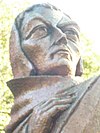
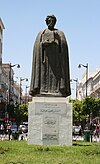


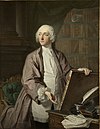

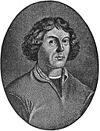


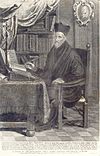







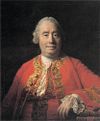









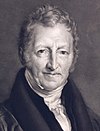


















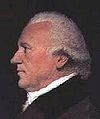

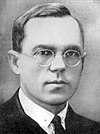














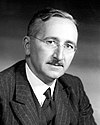

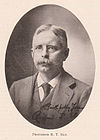


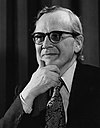




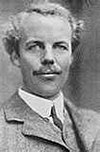



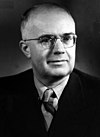


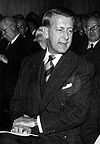


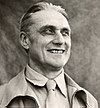


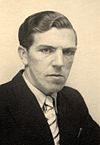








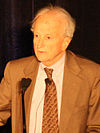
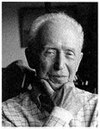





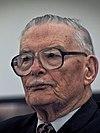







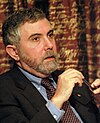



















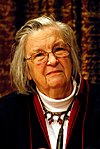







No comments:
Post a Comment